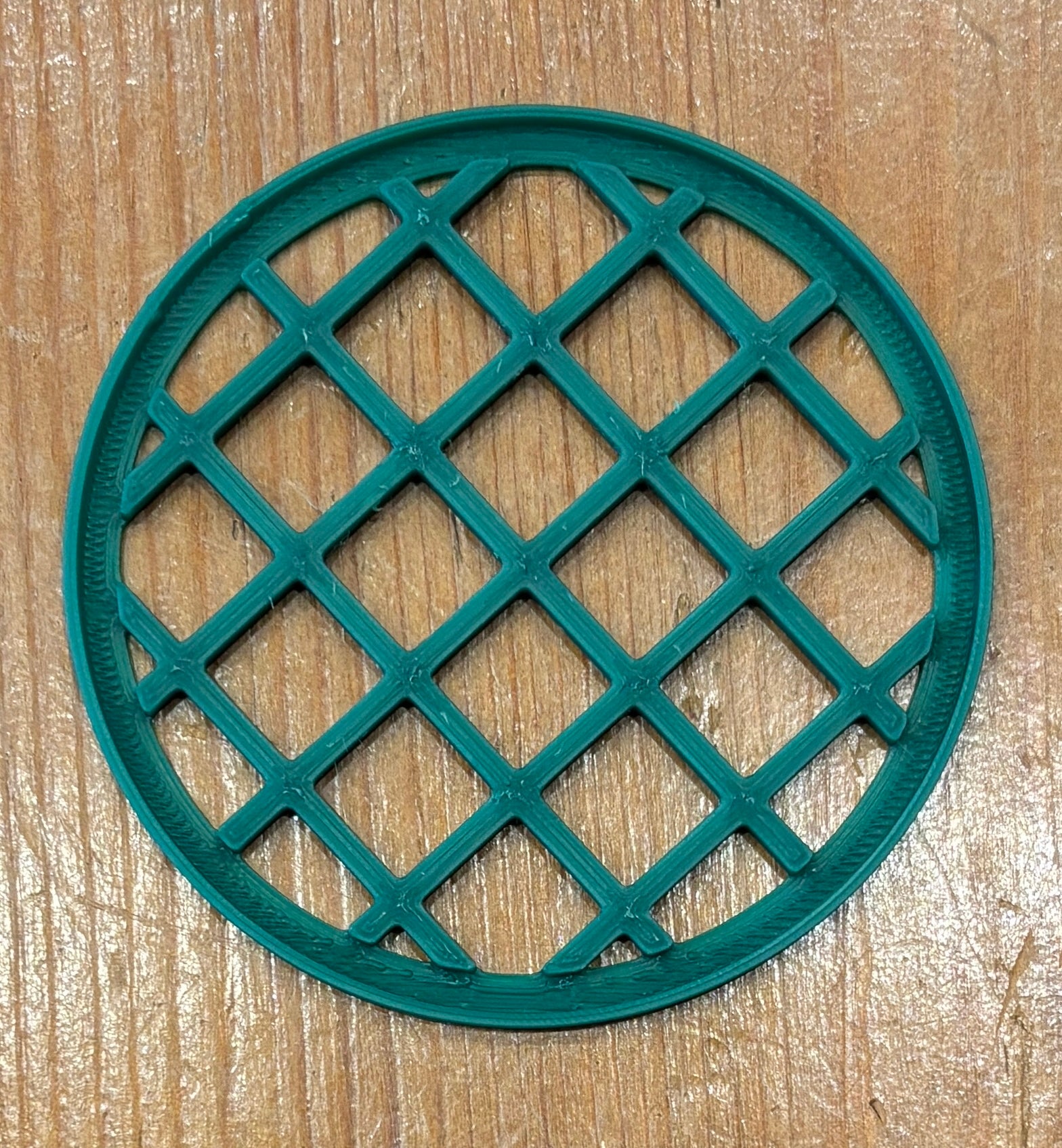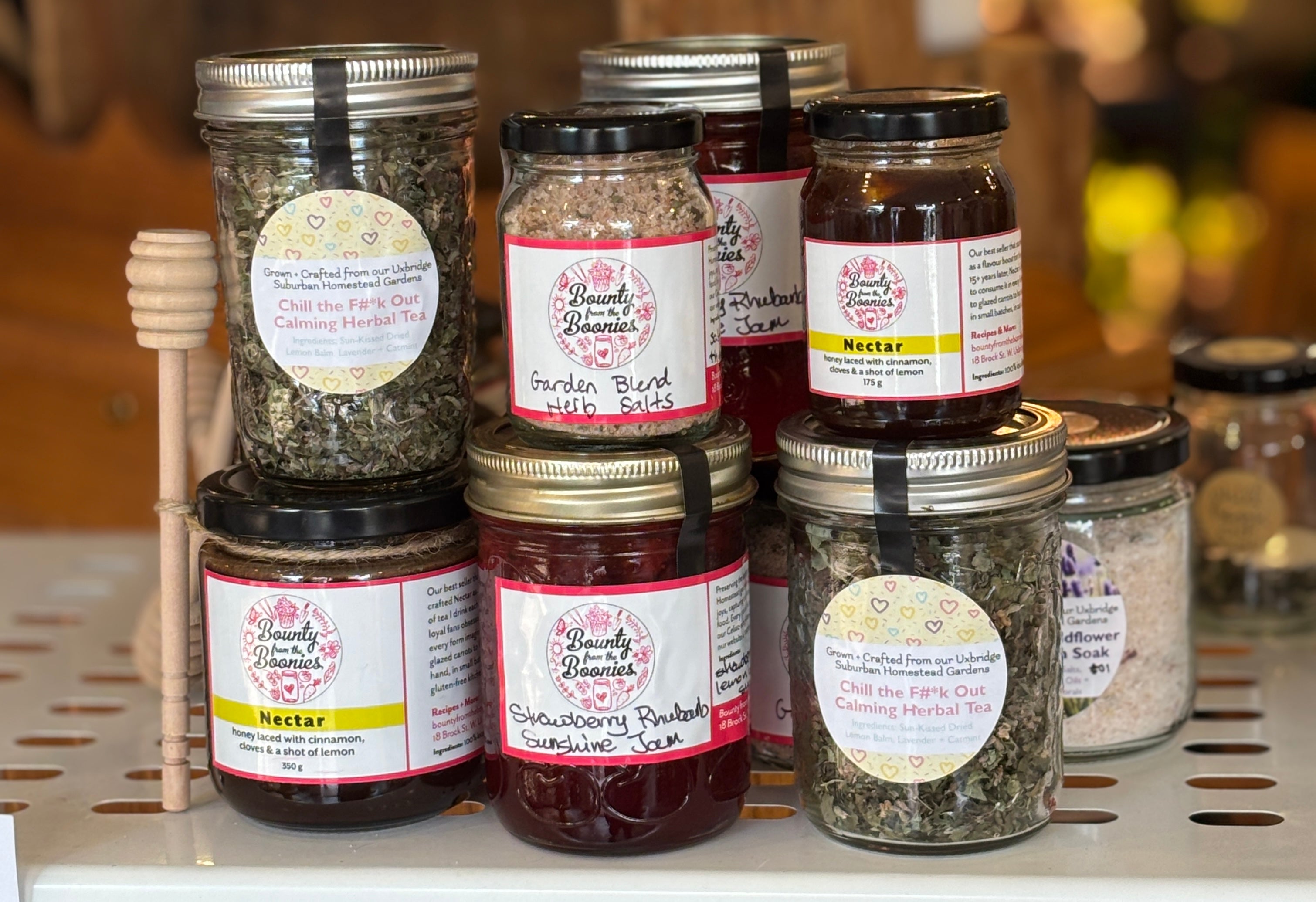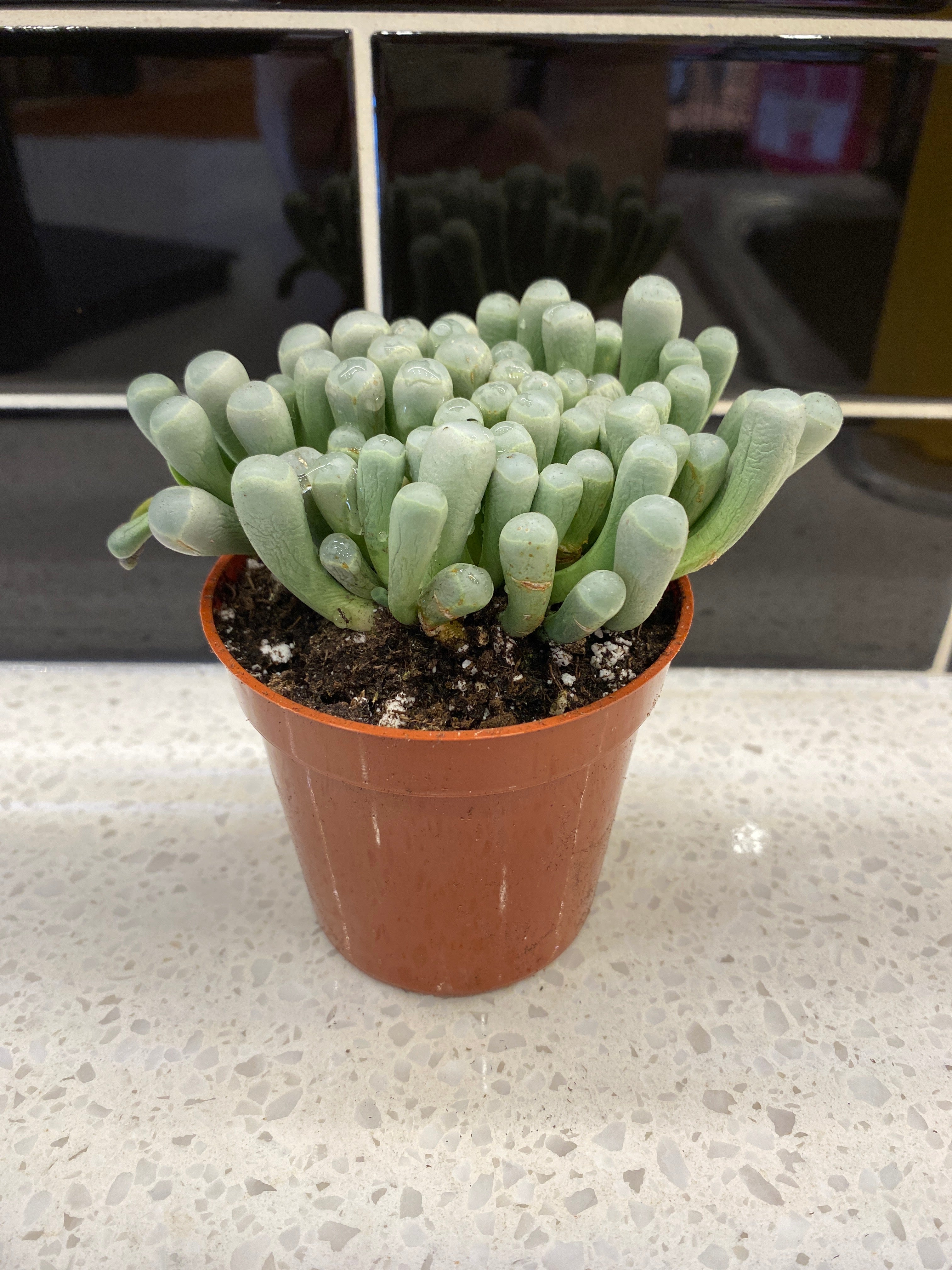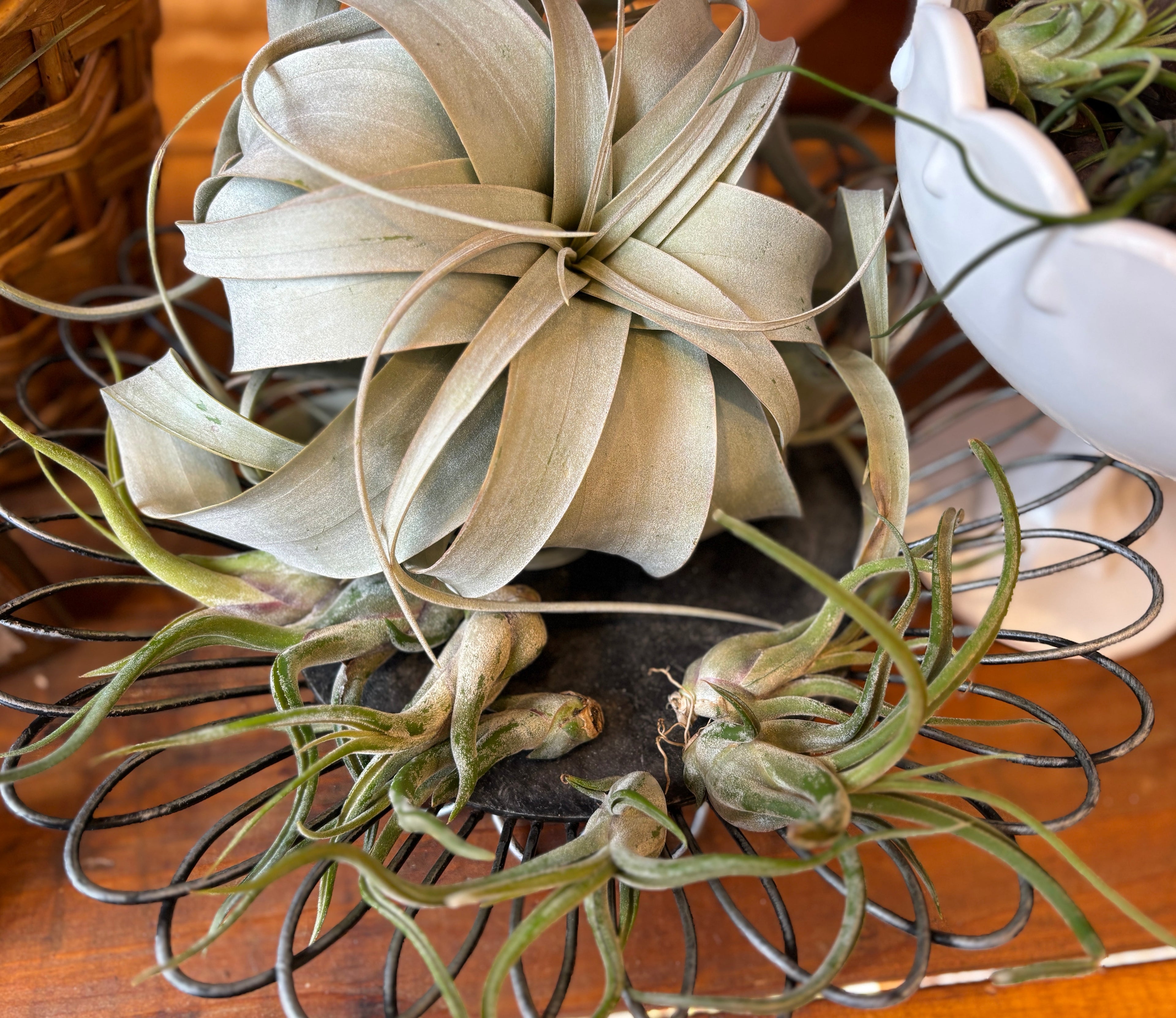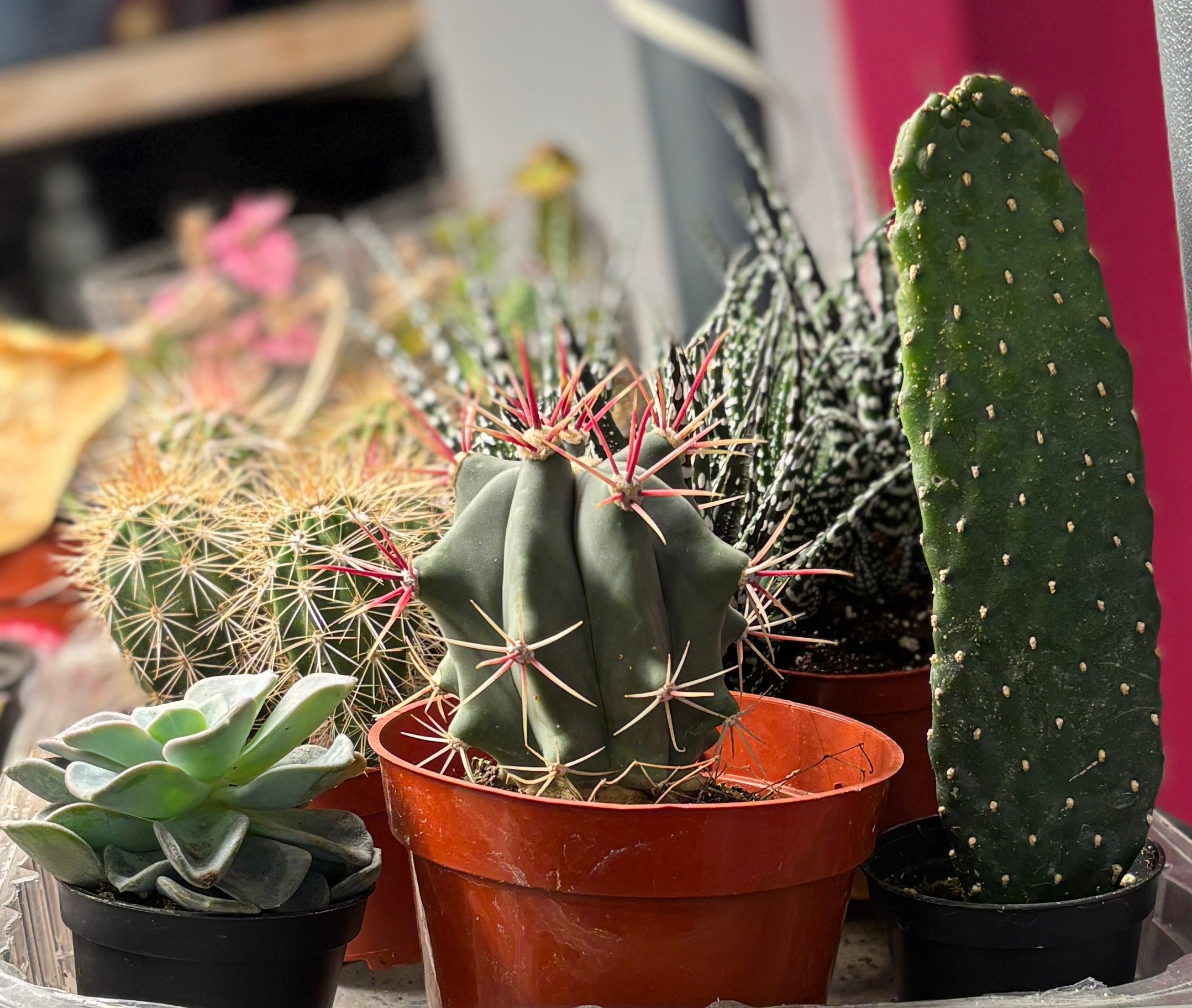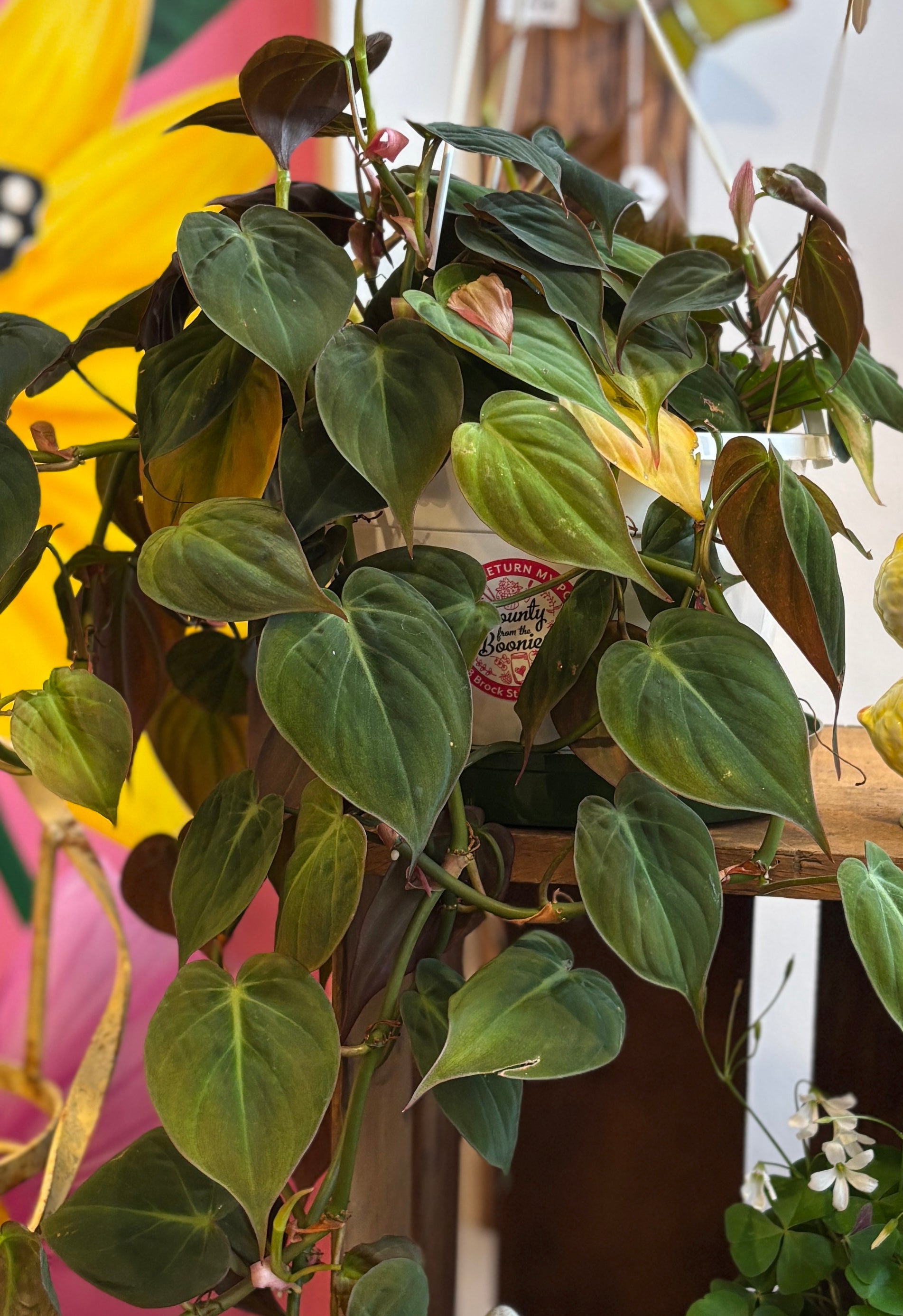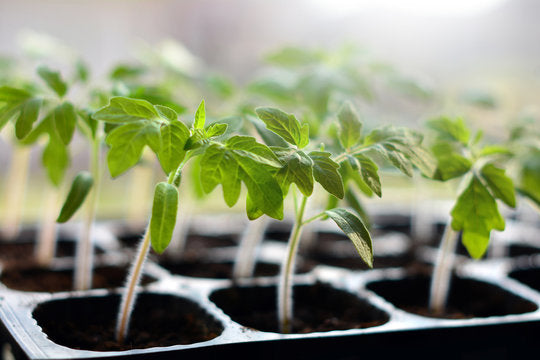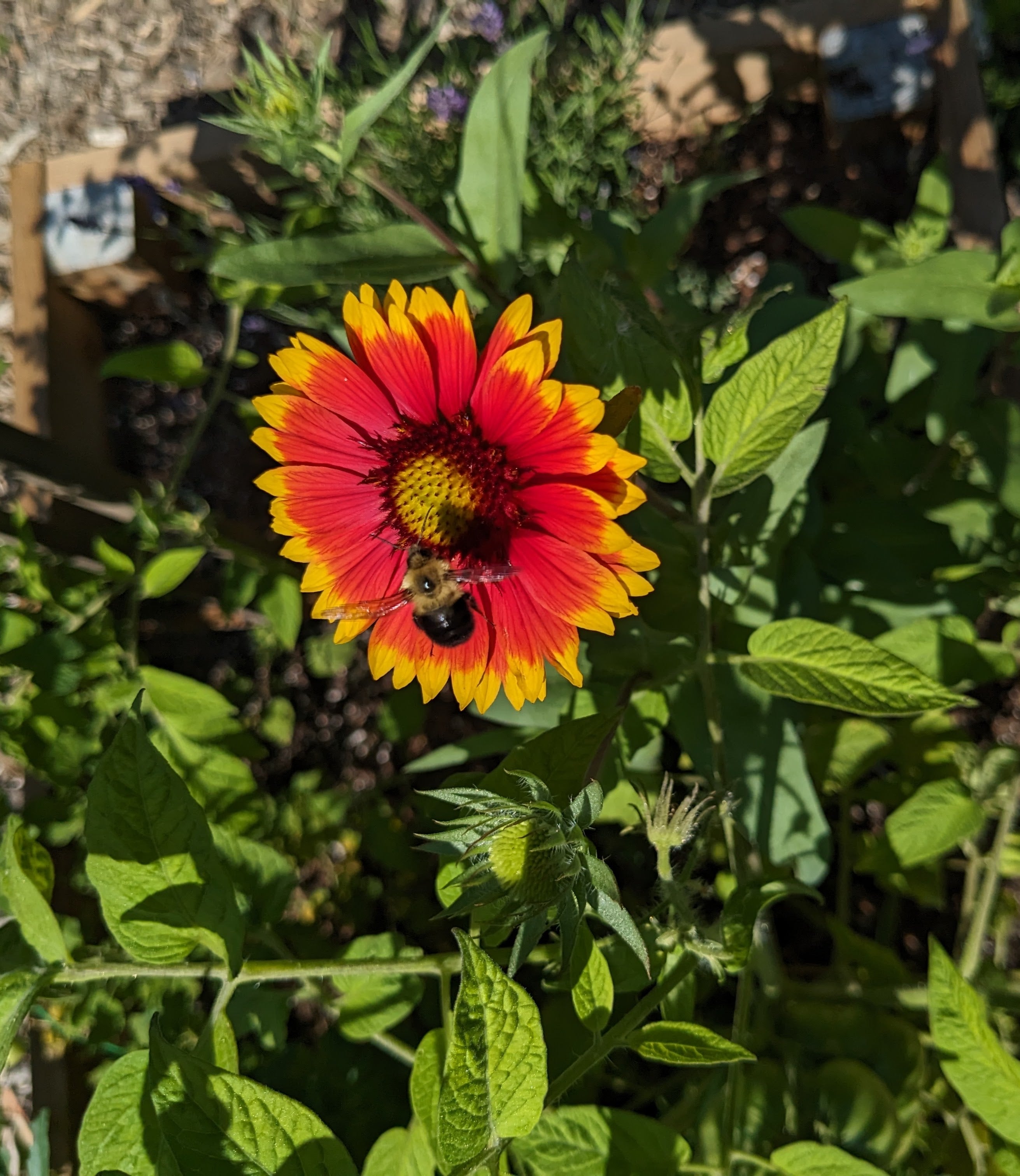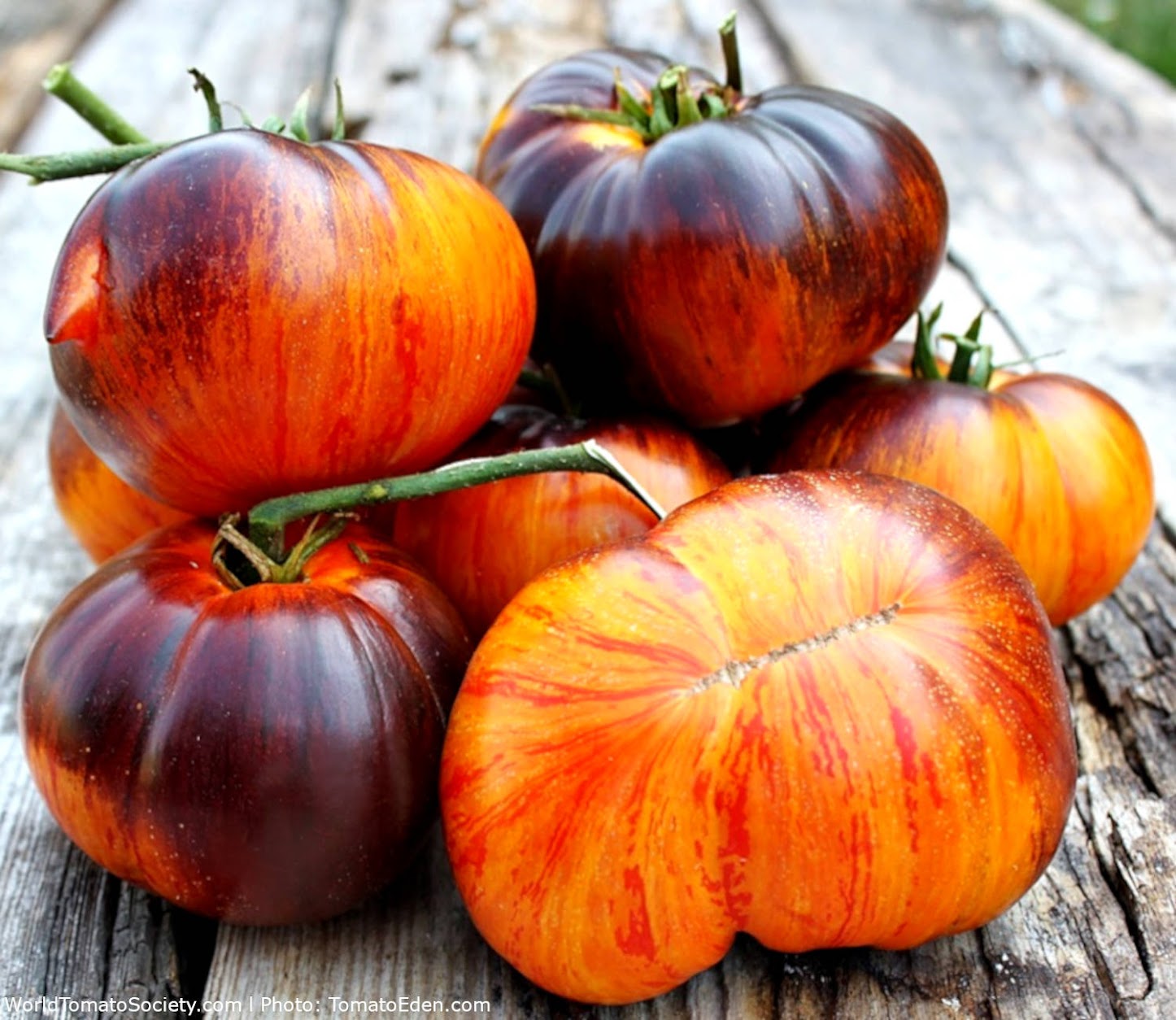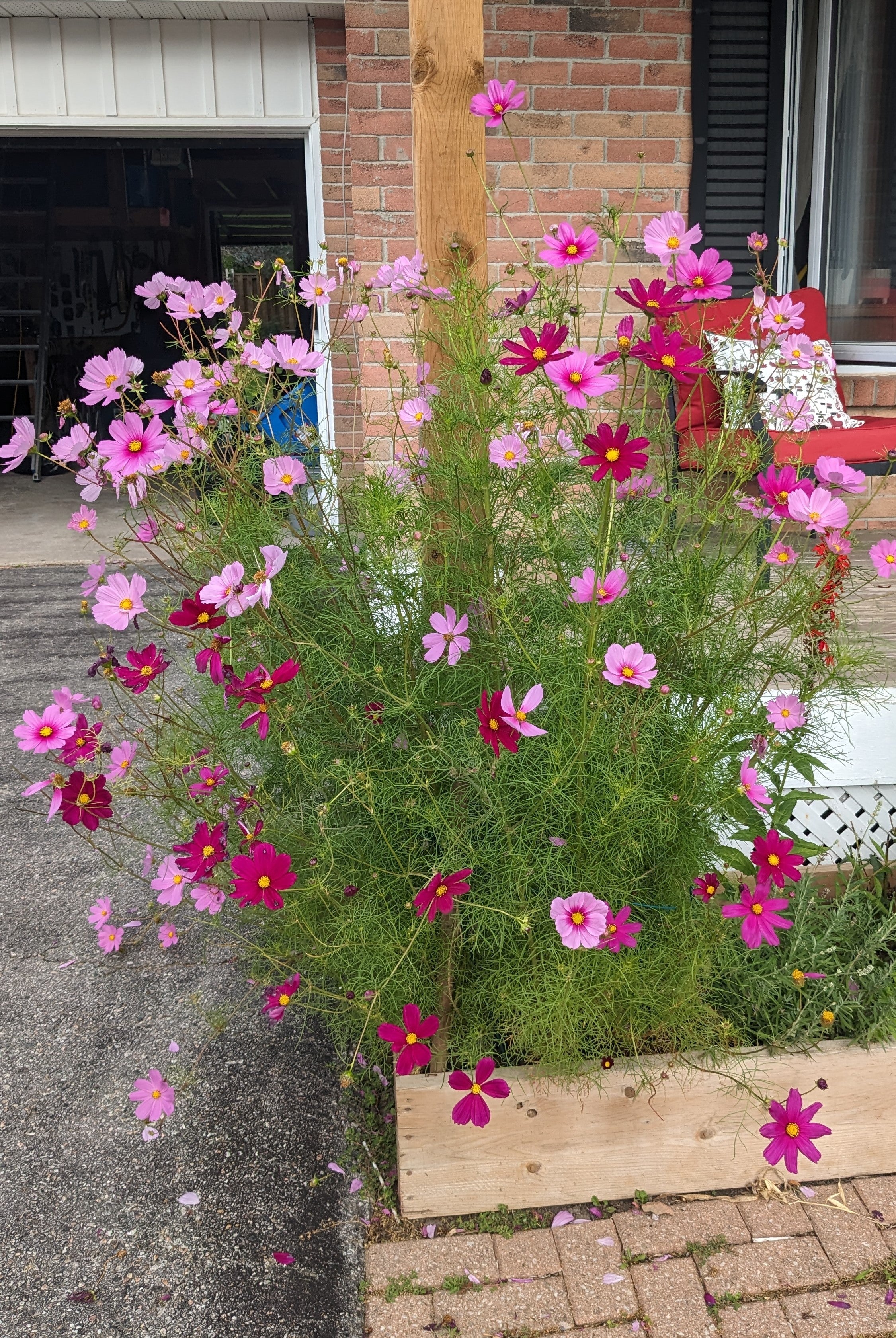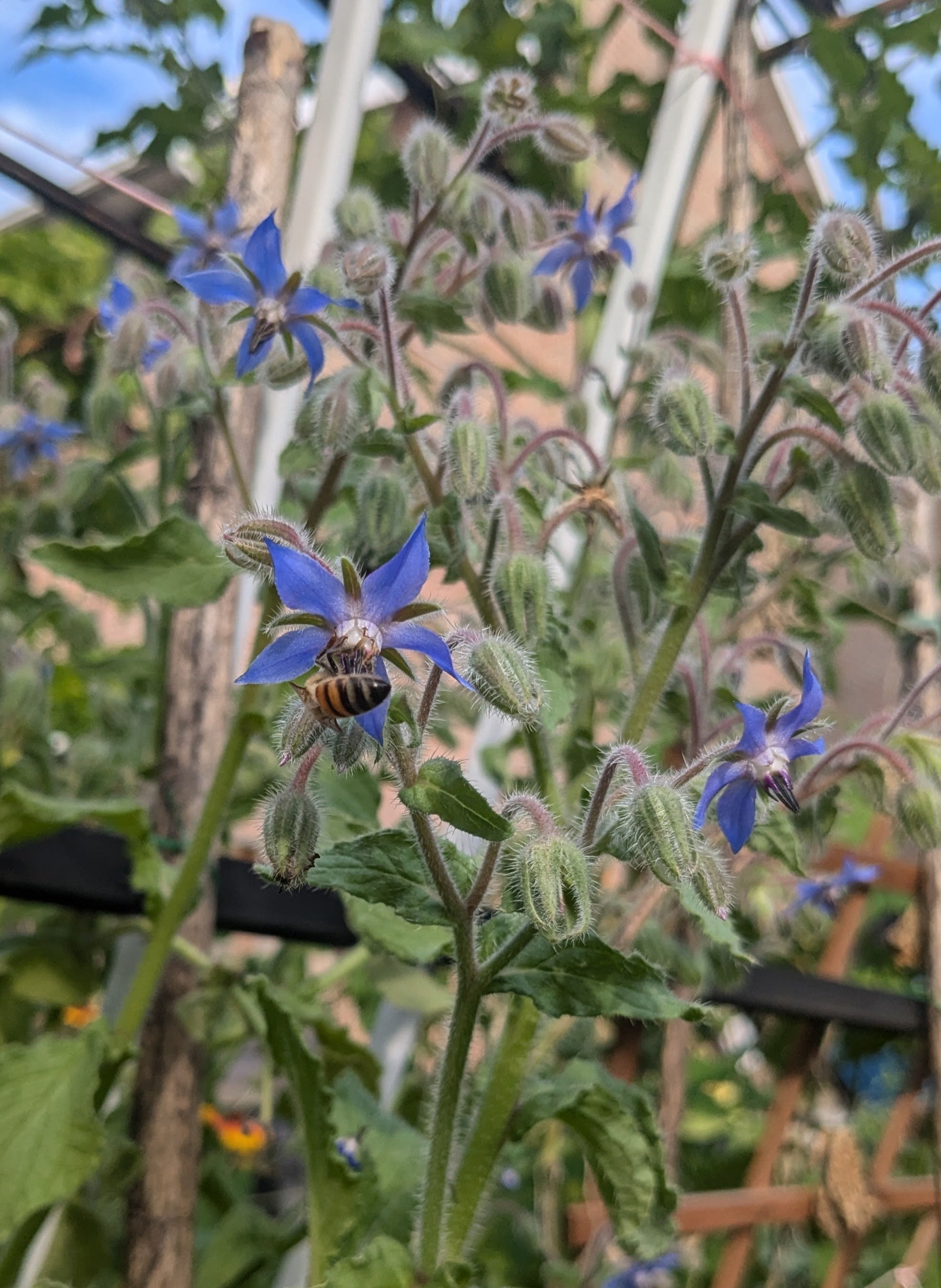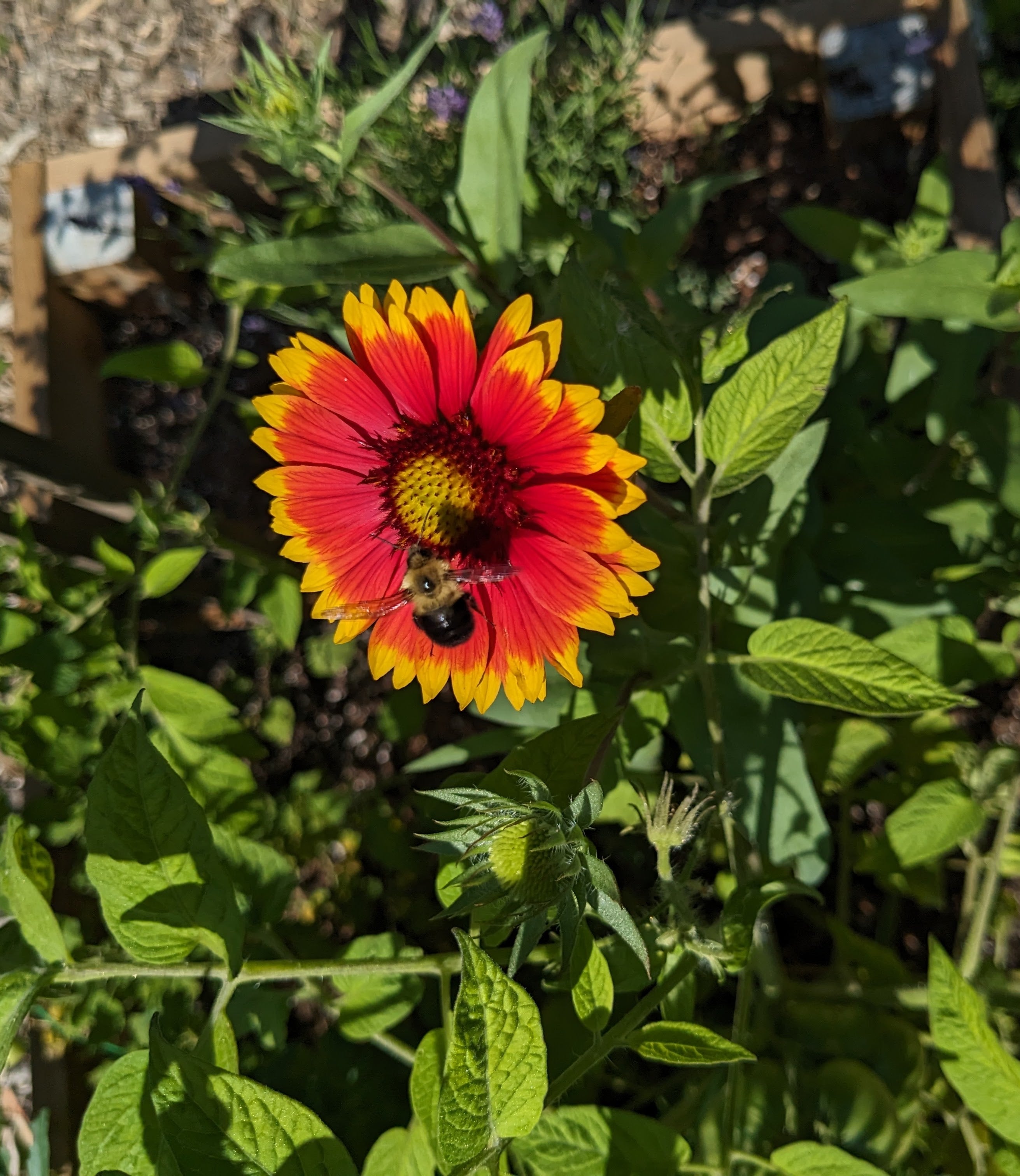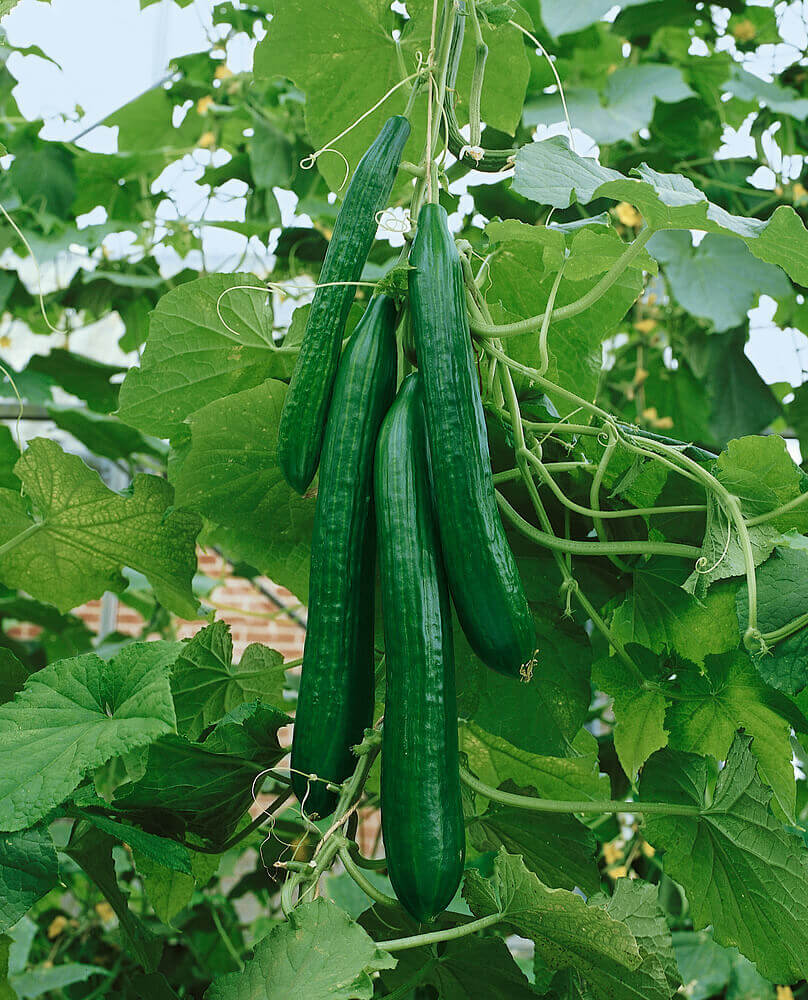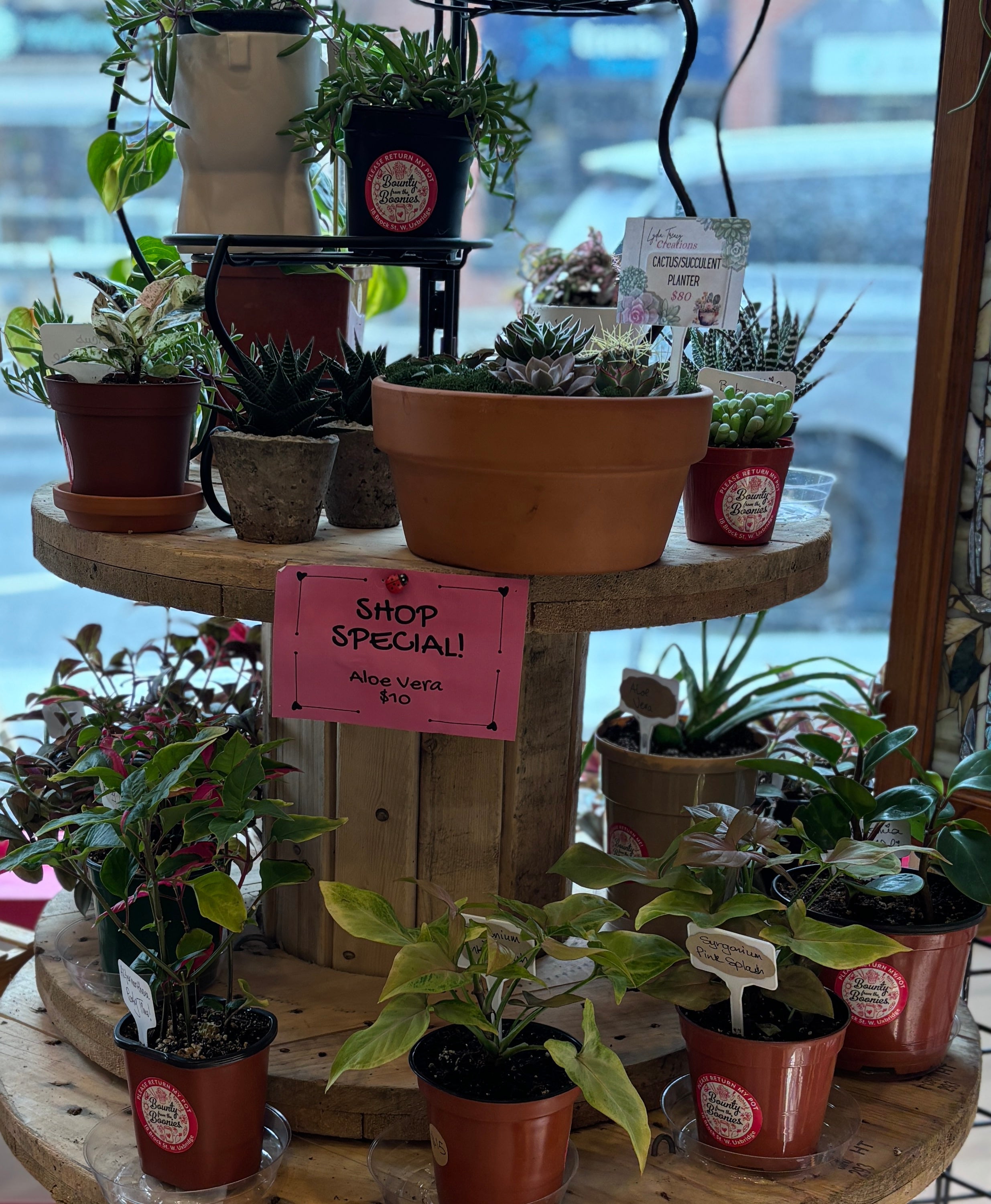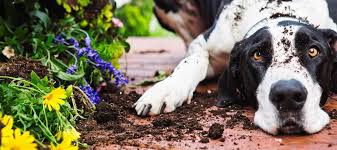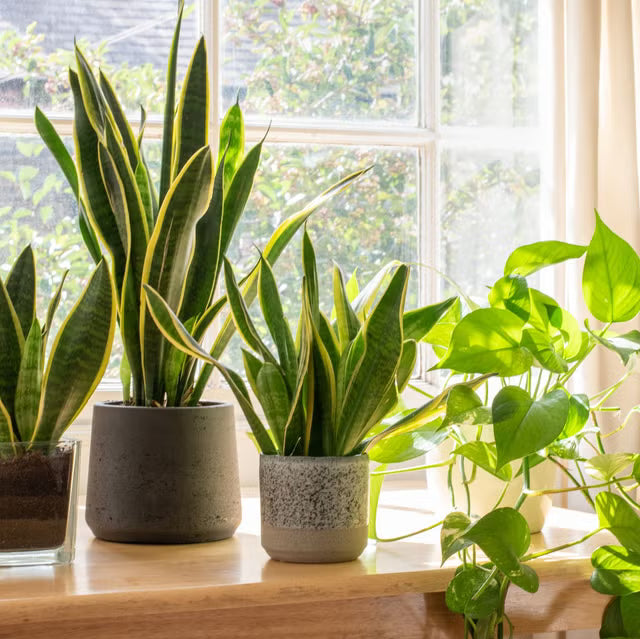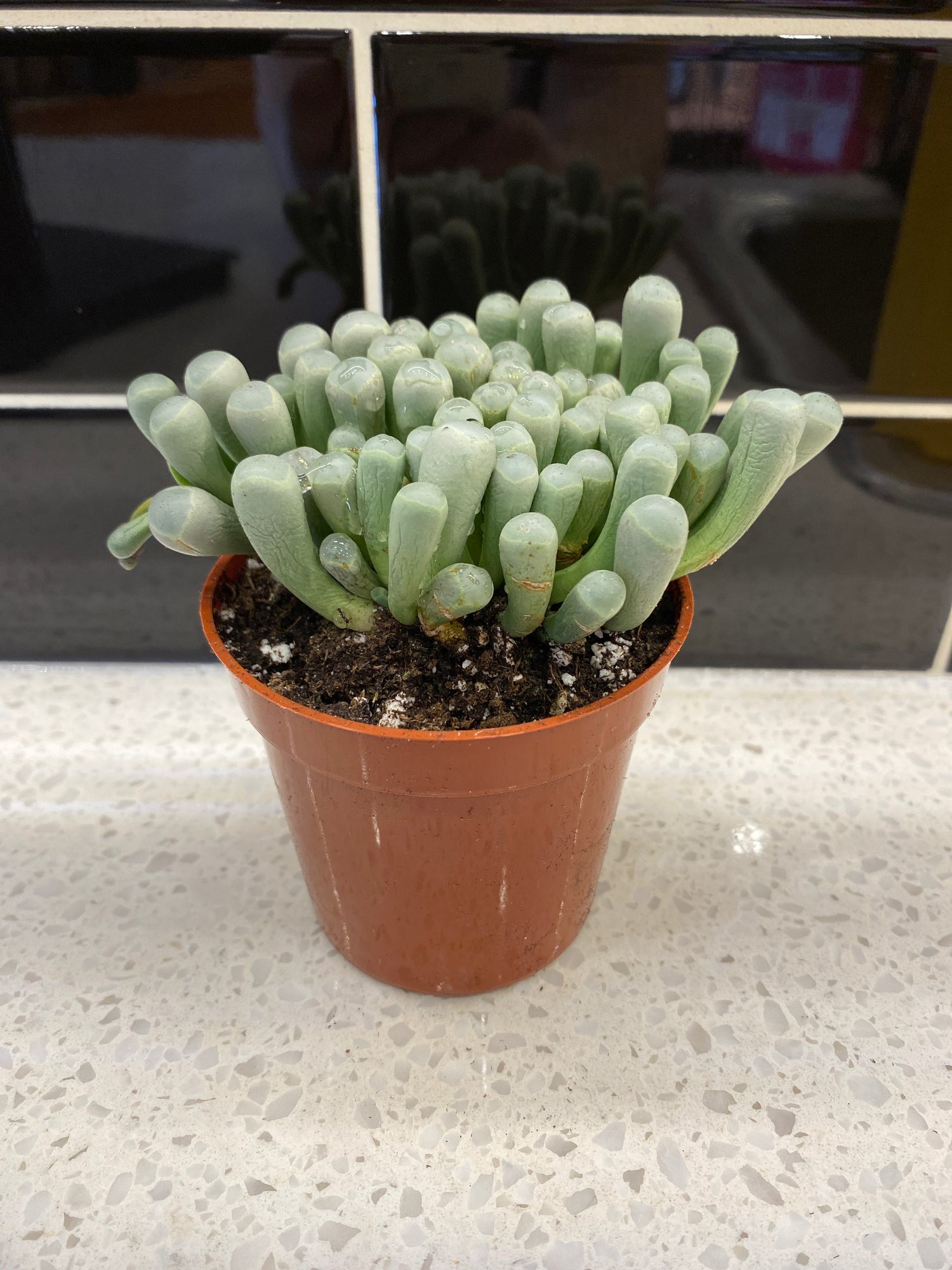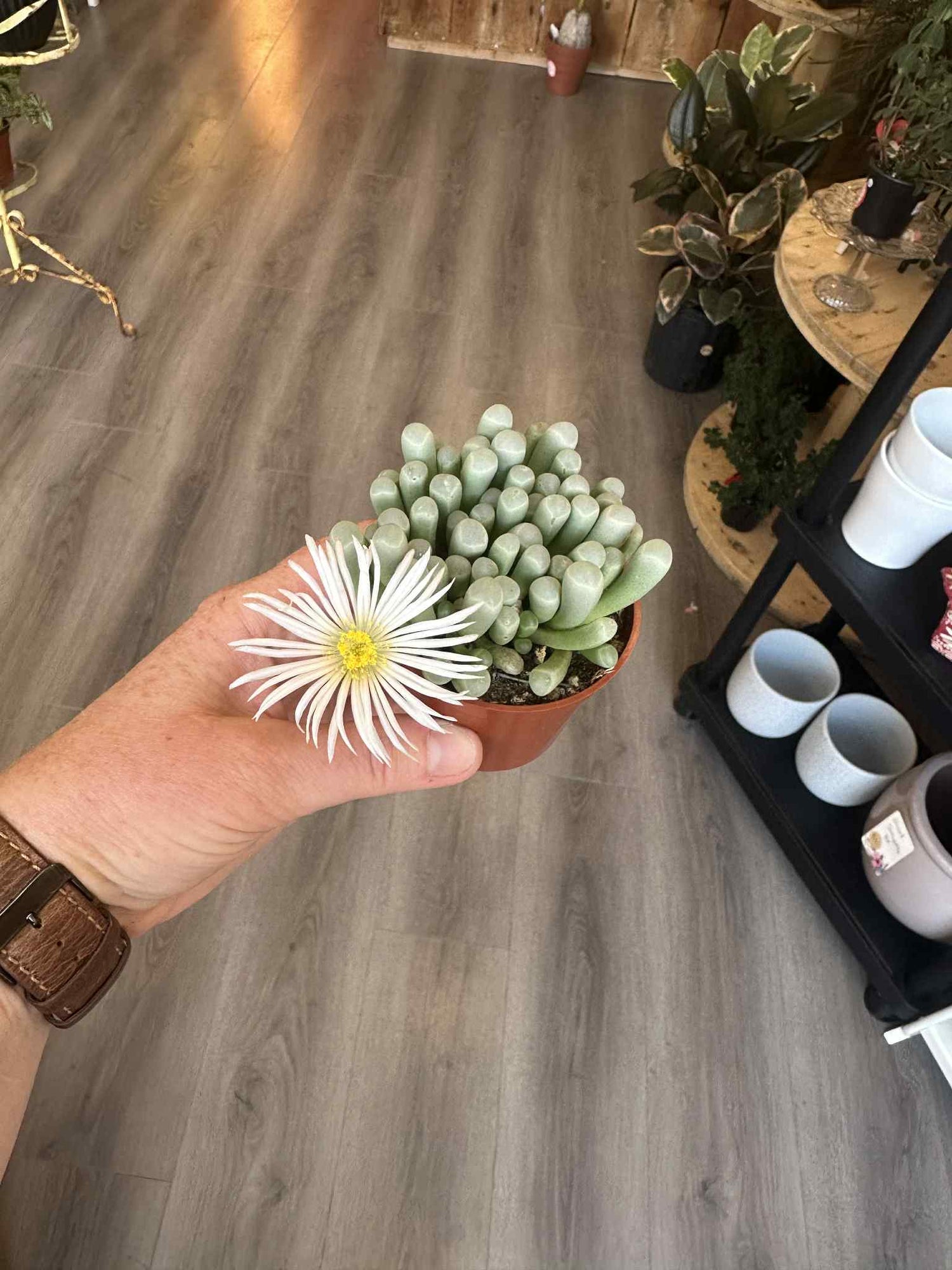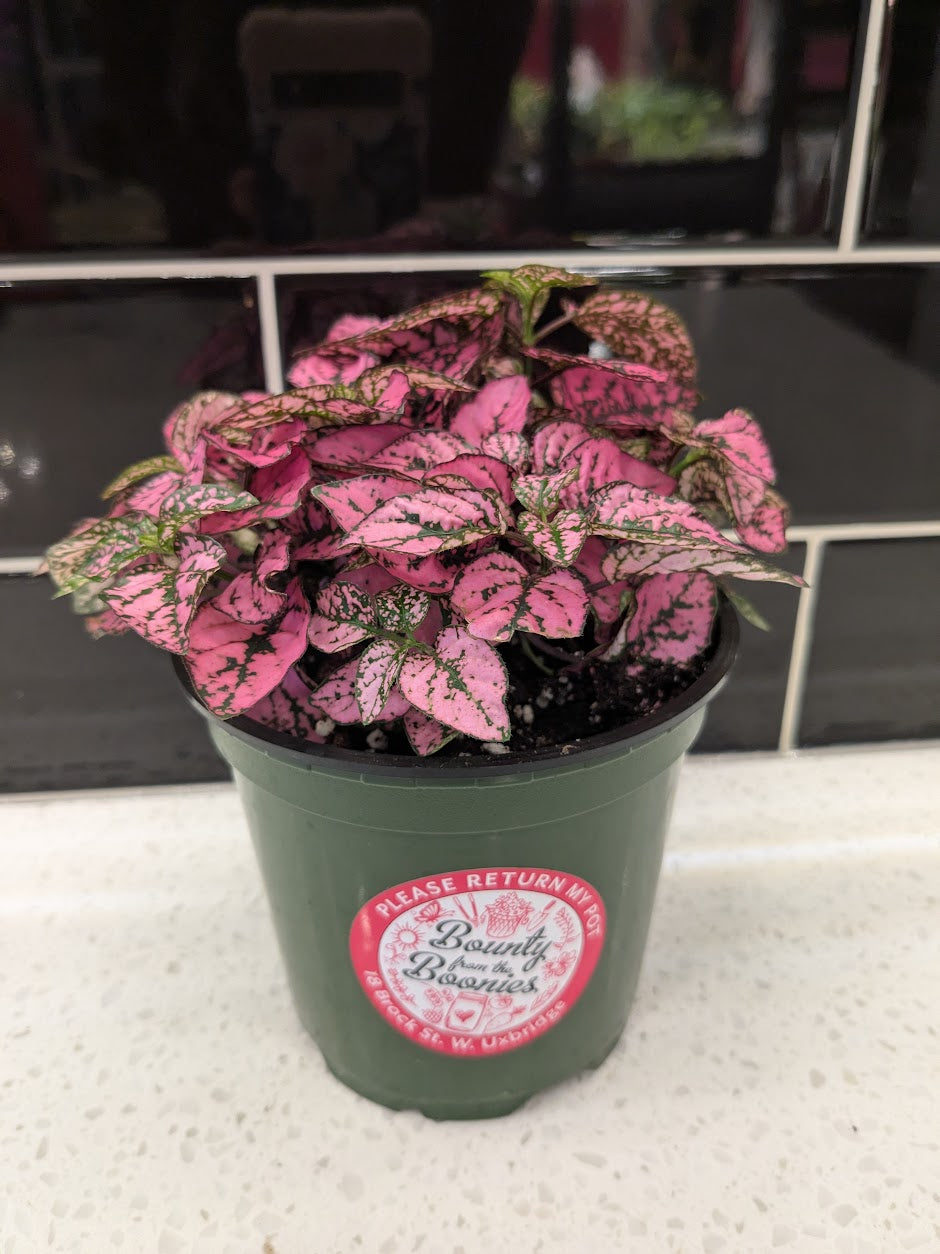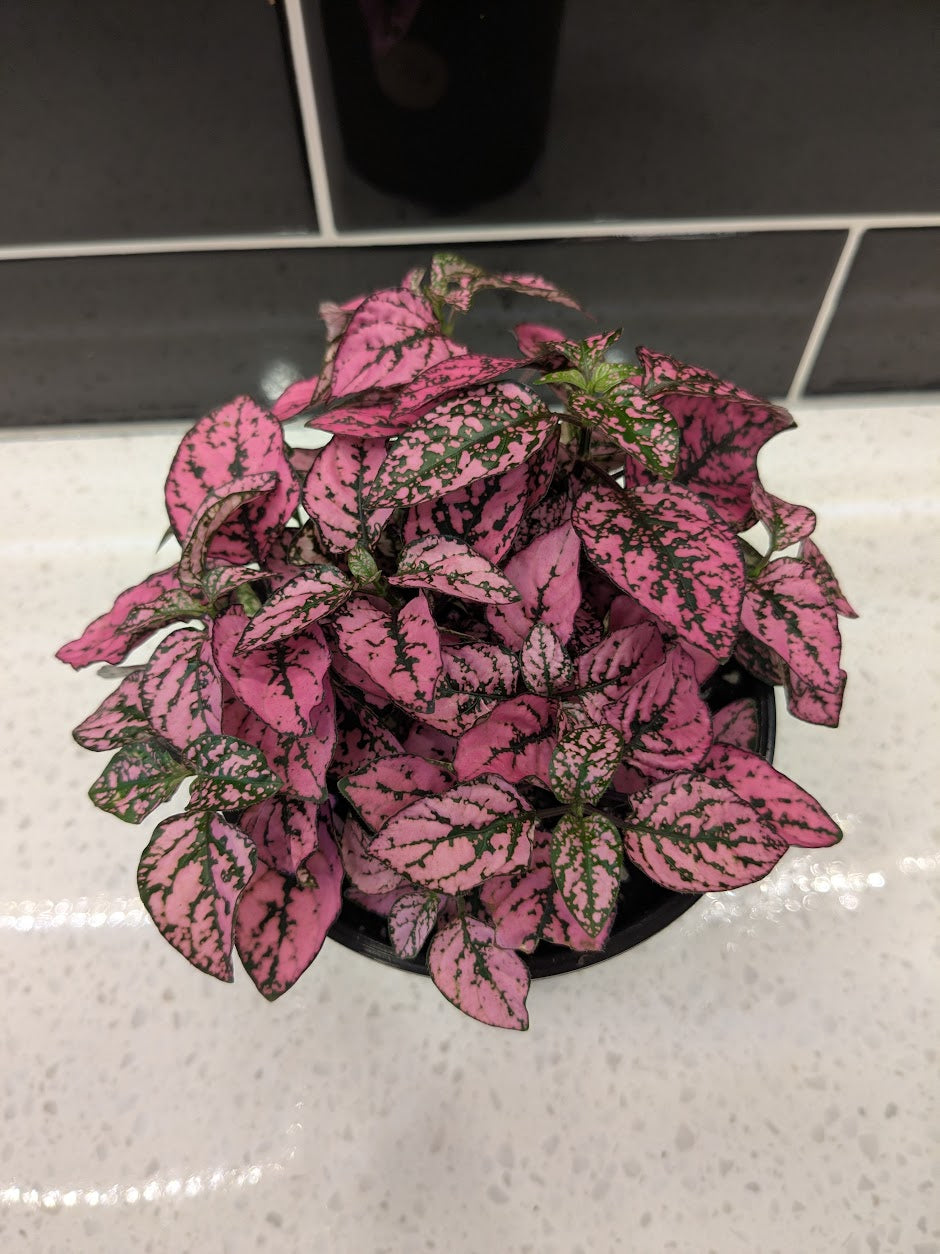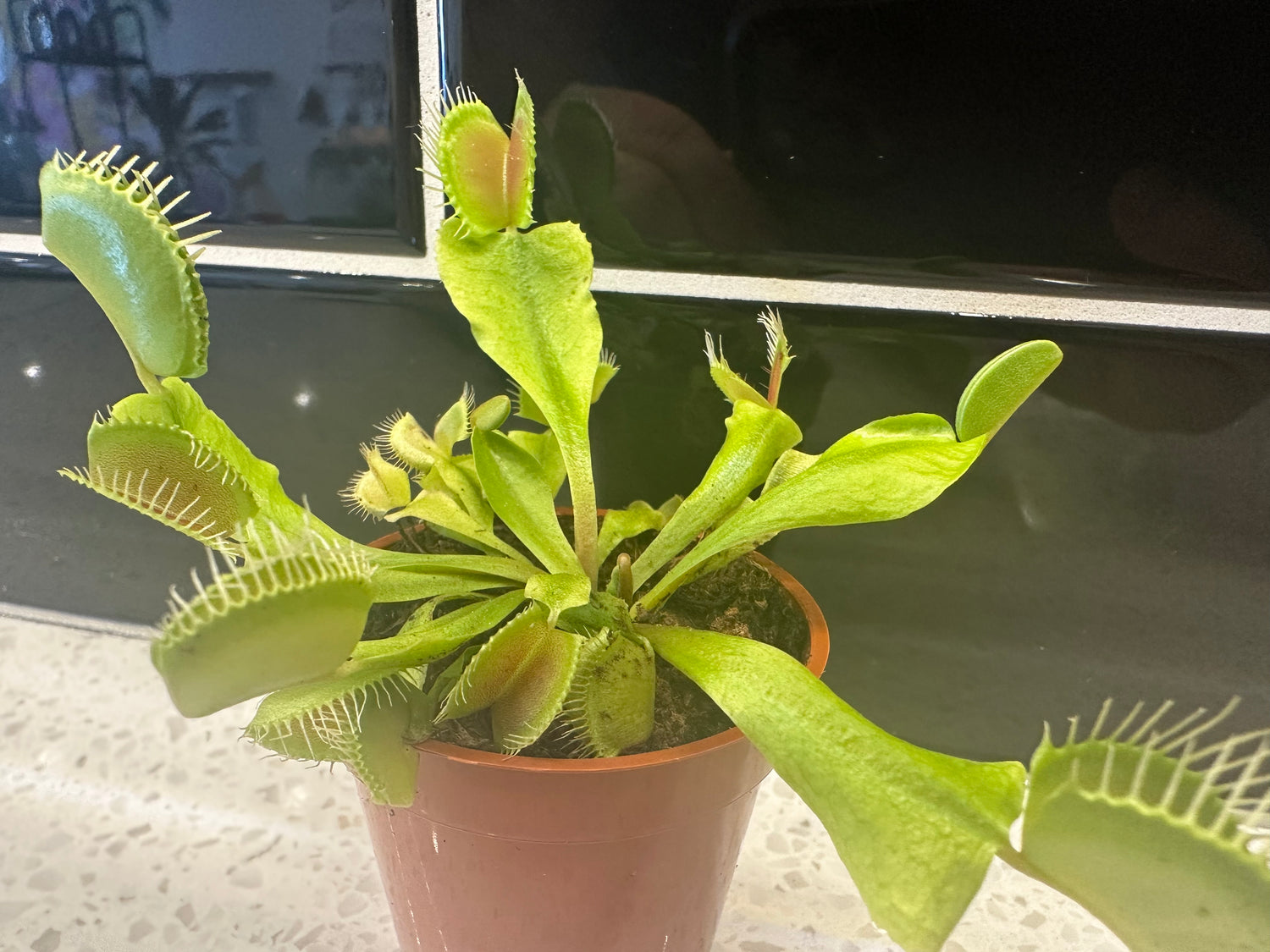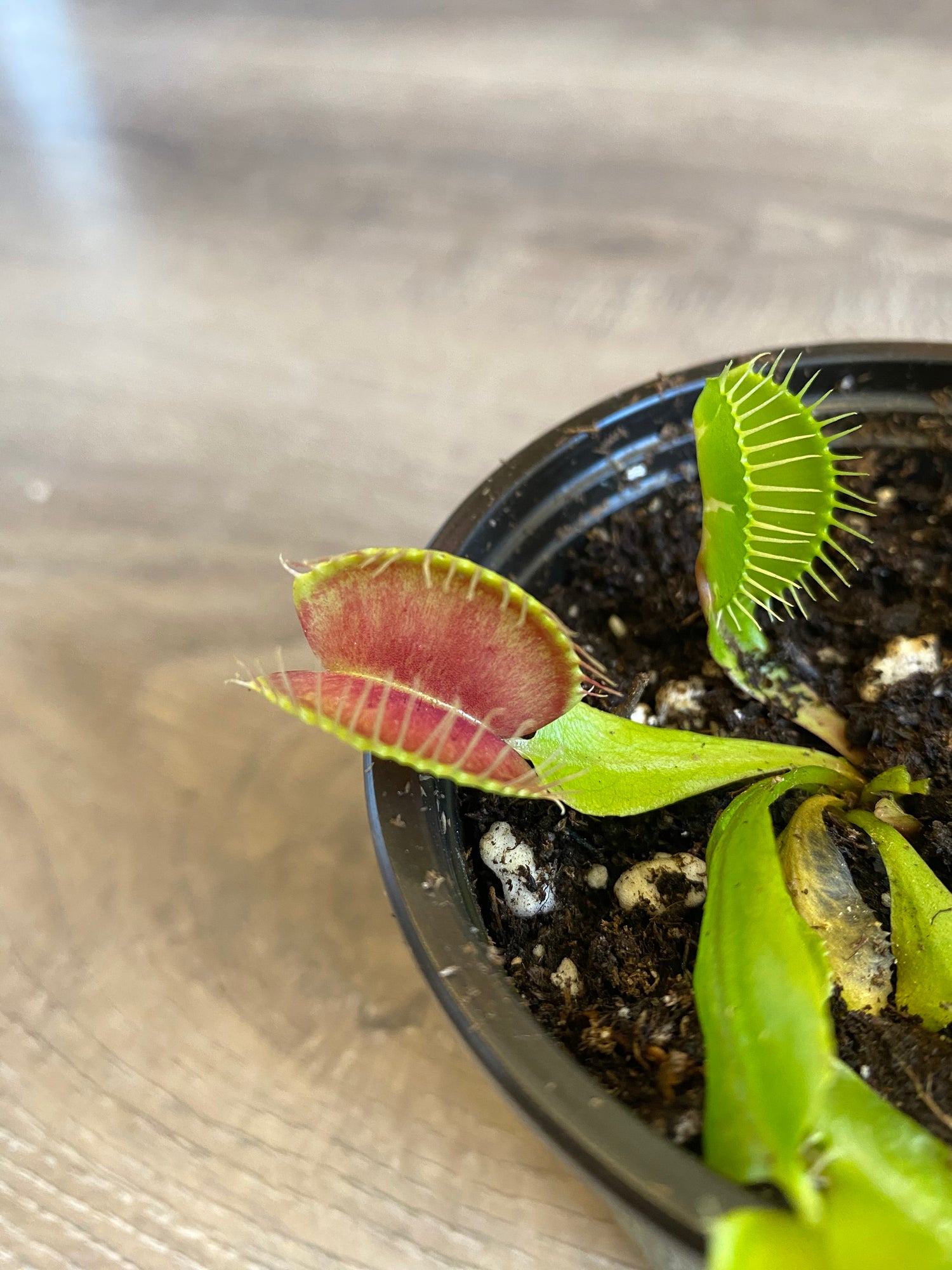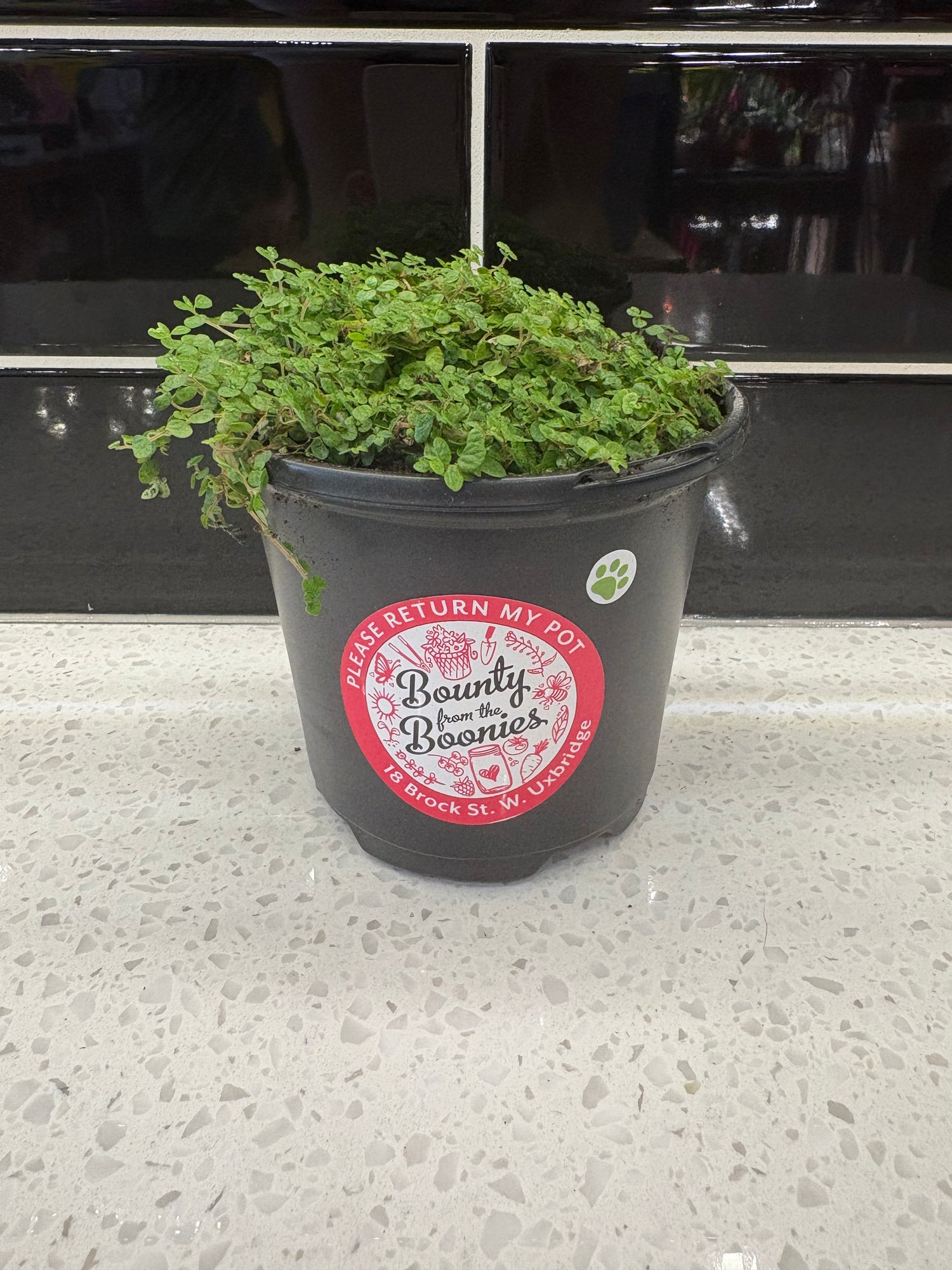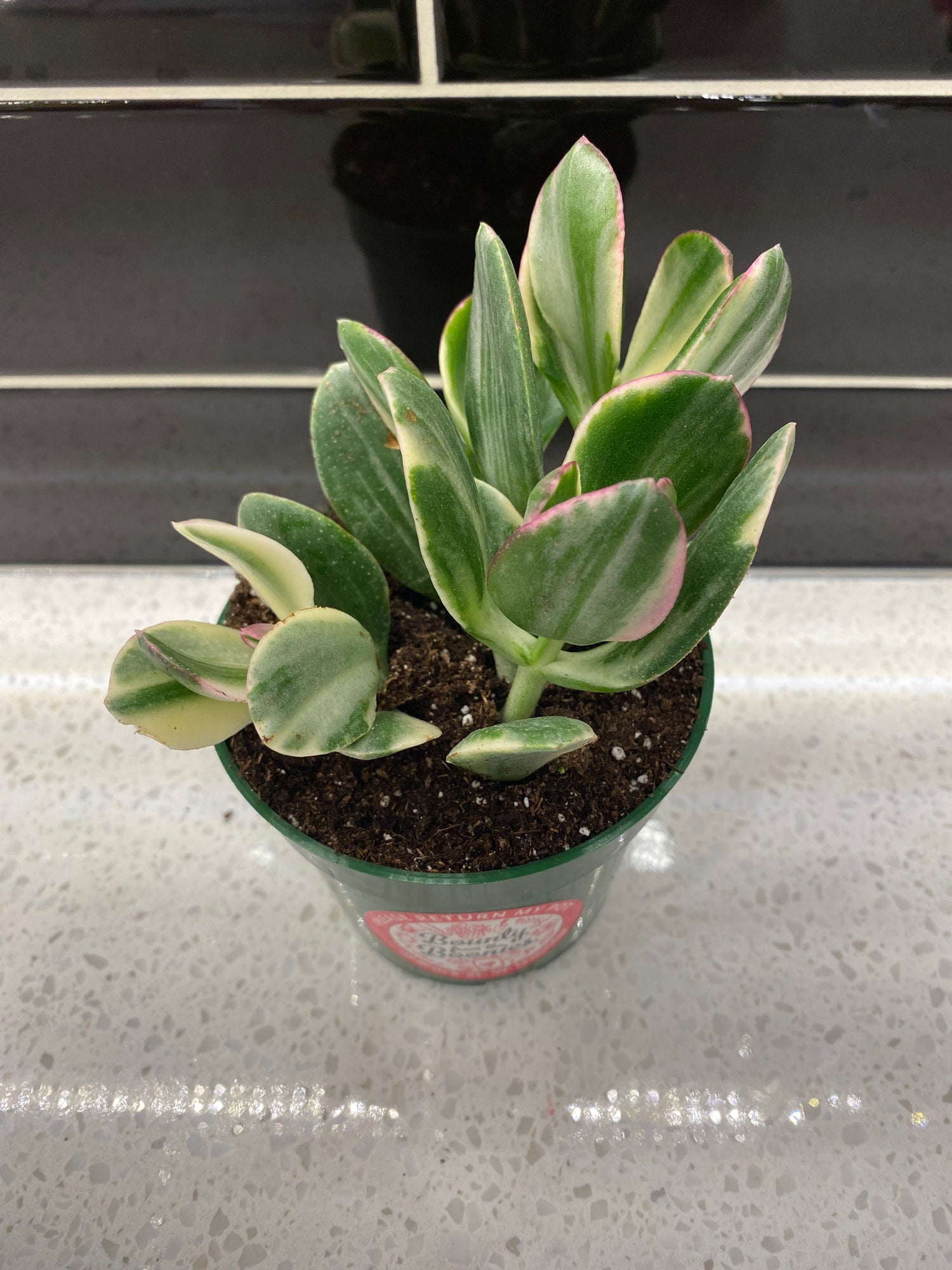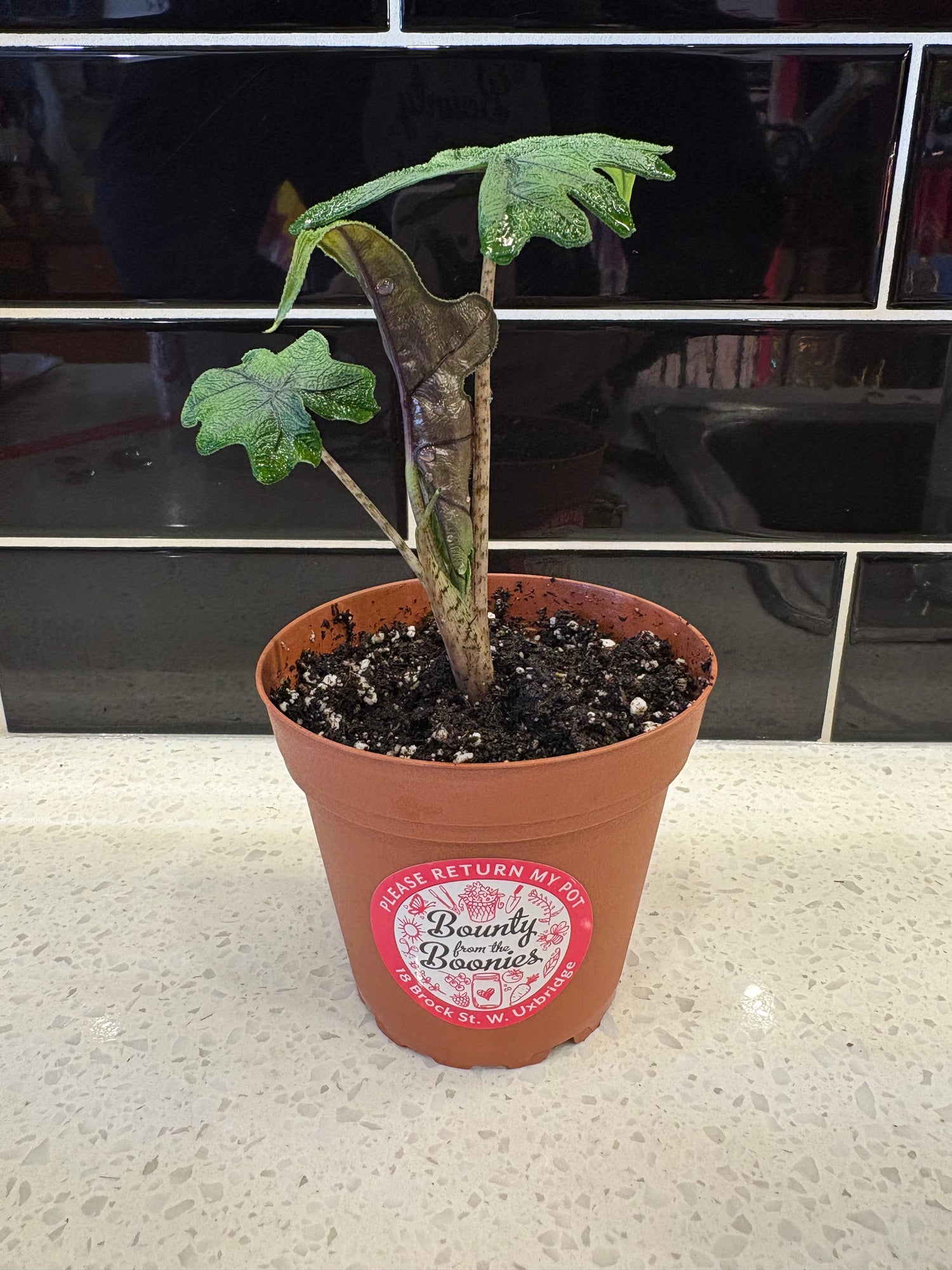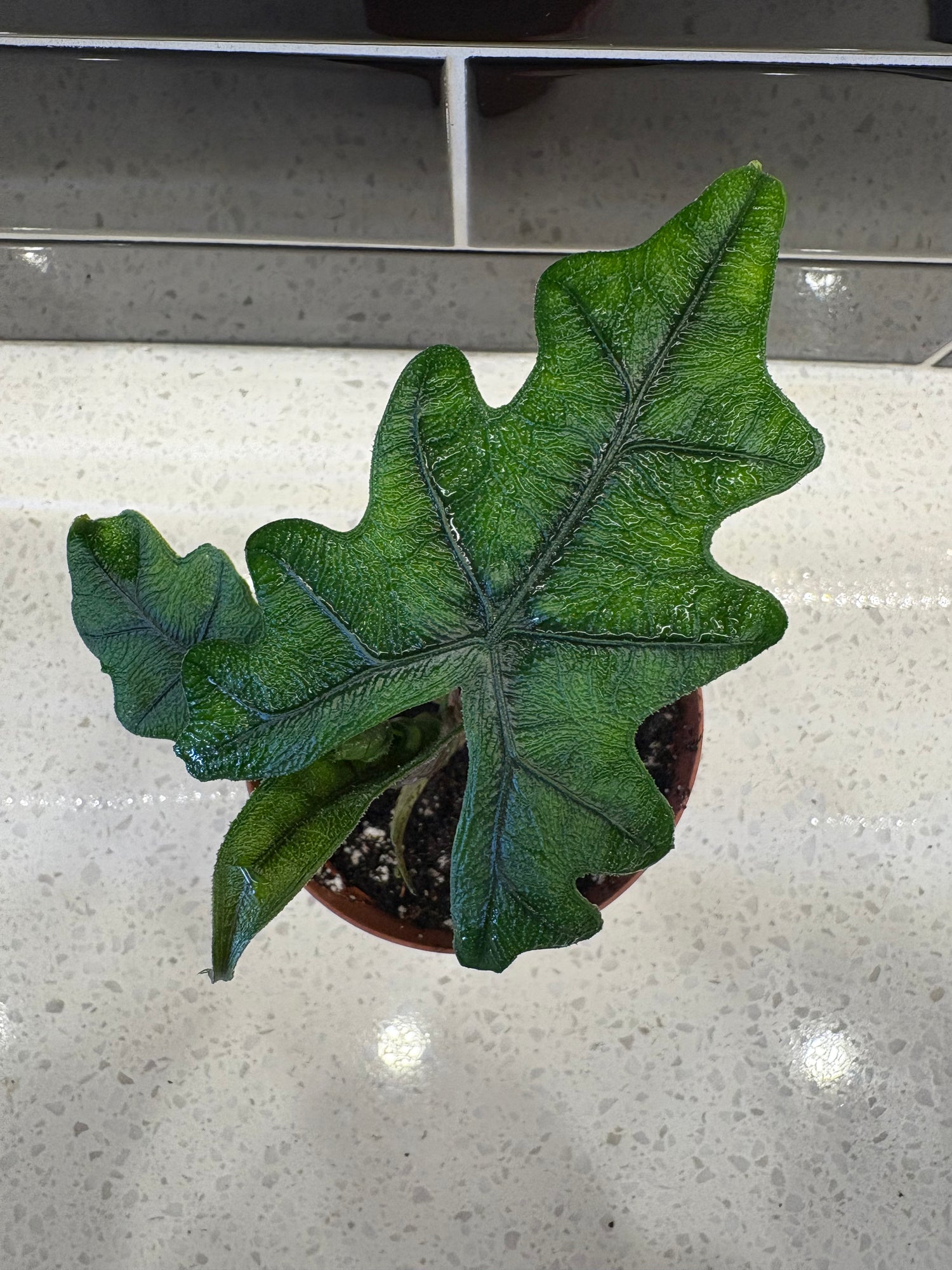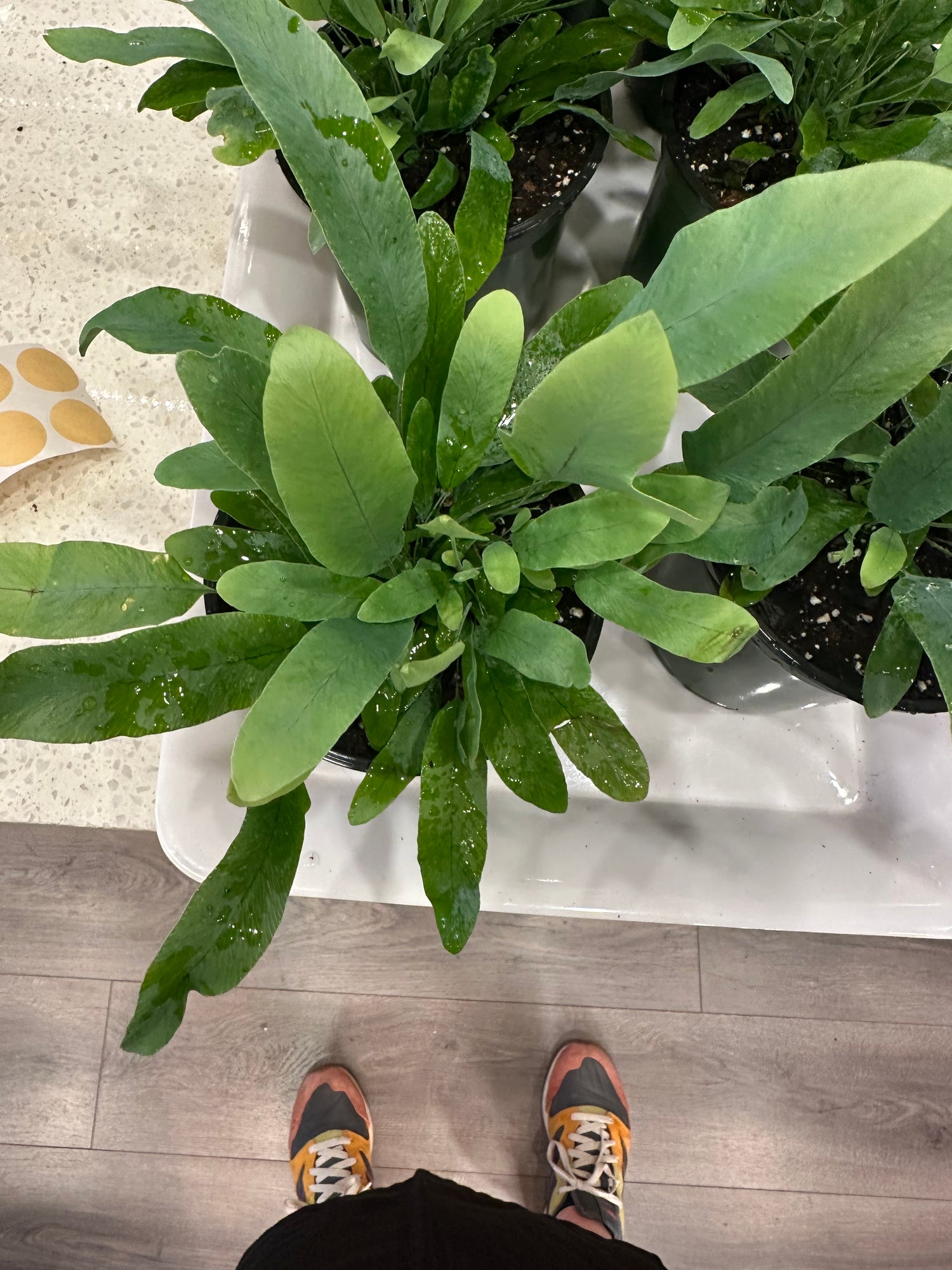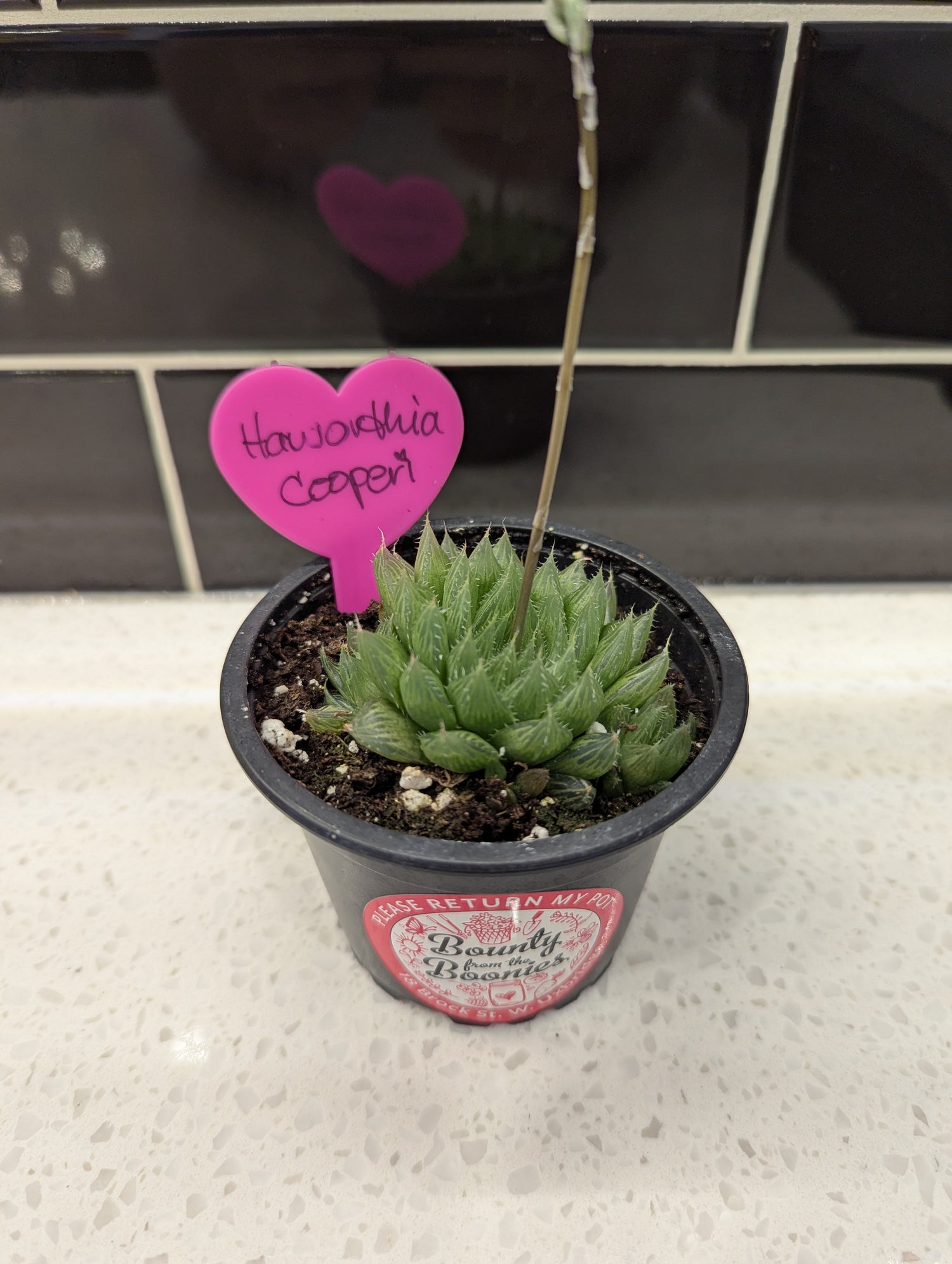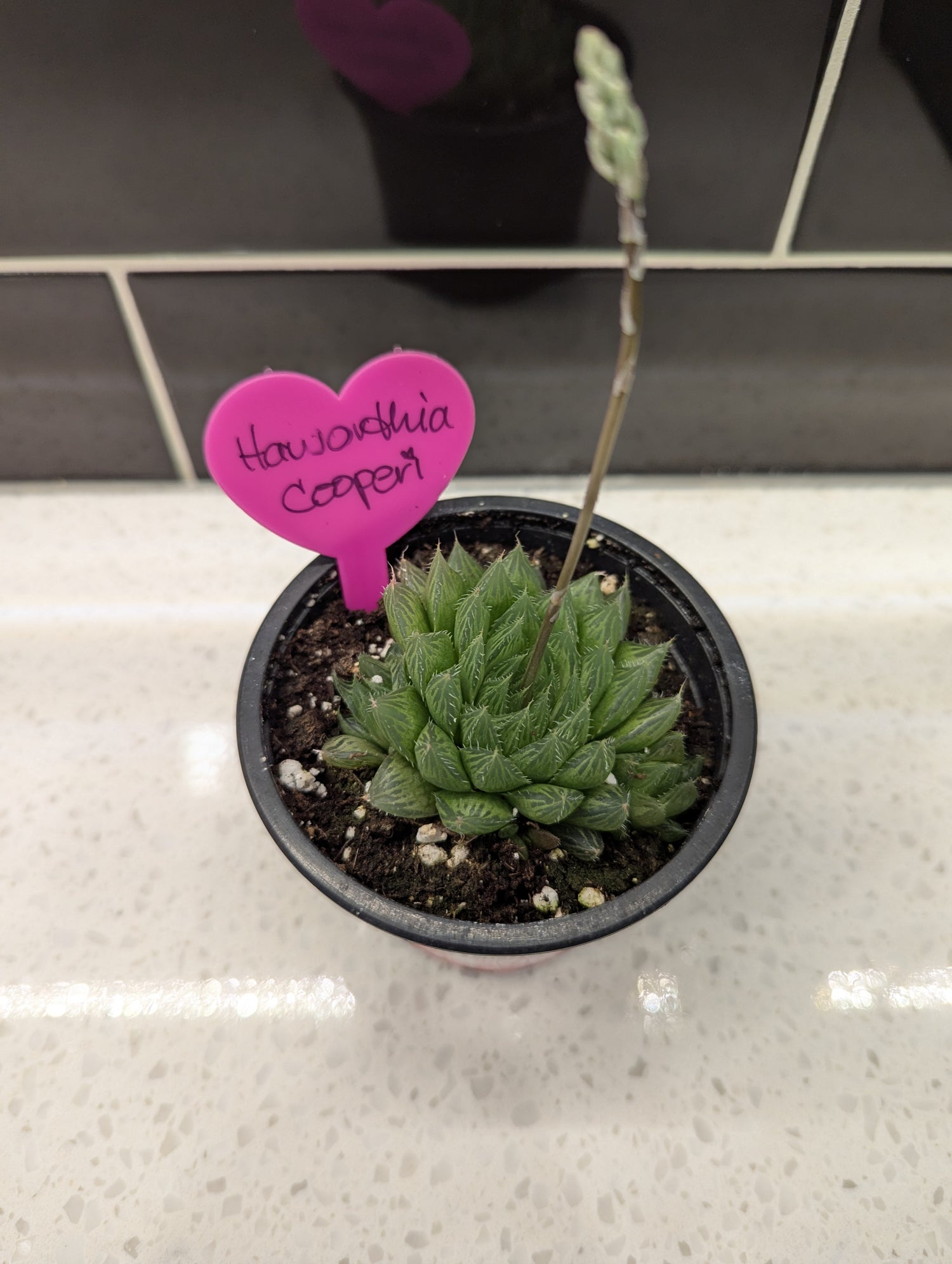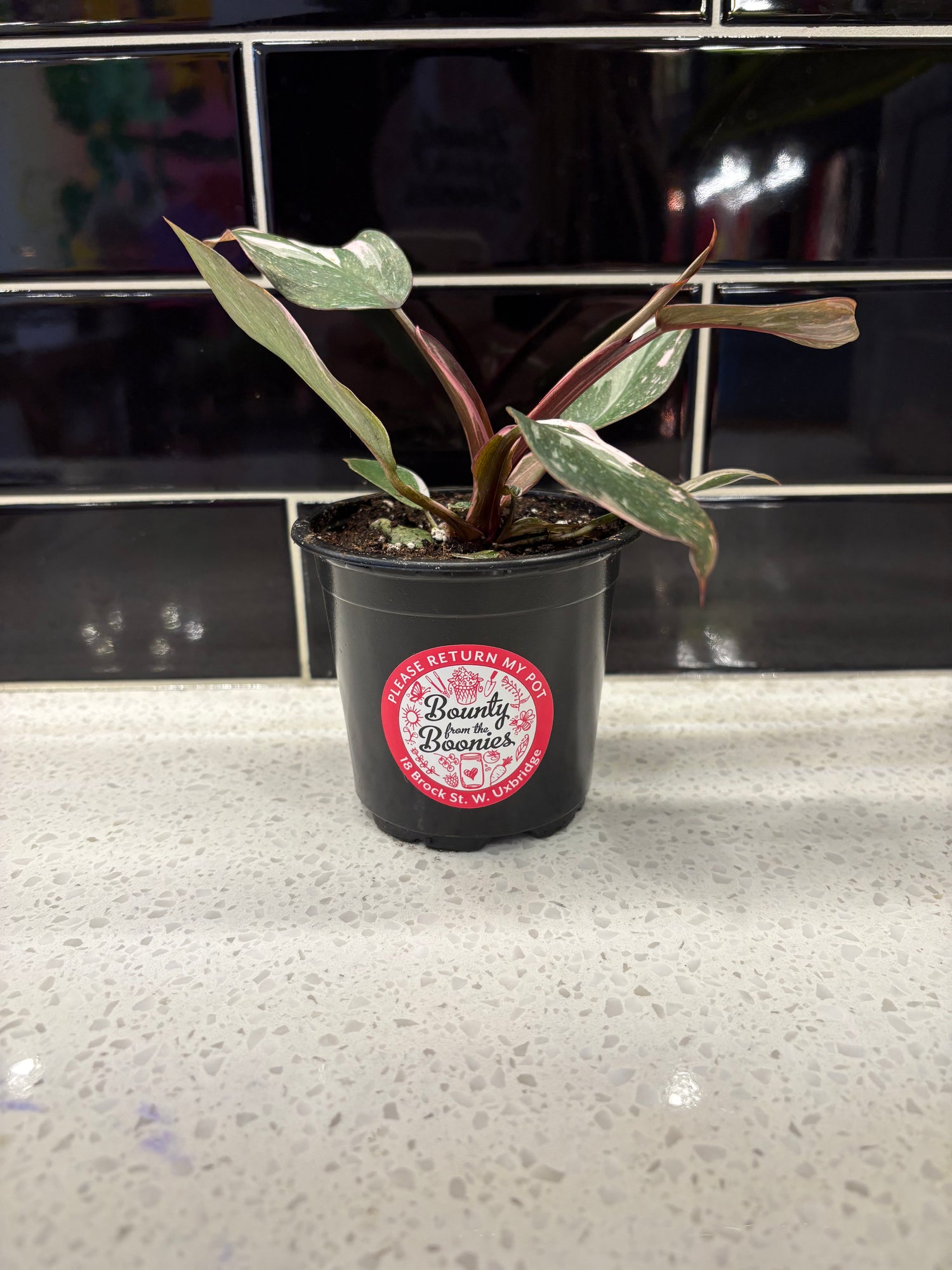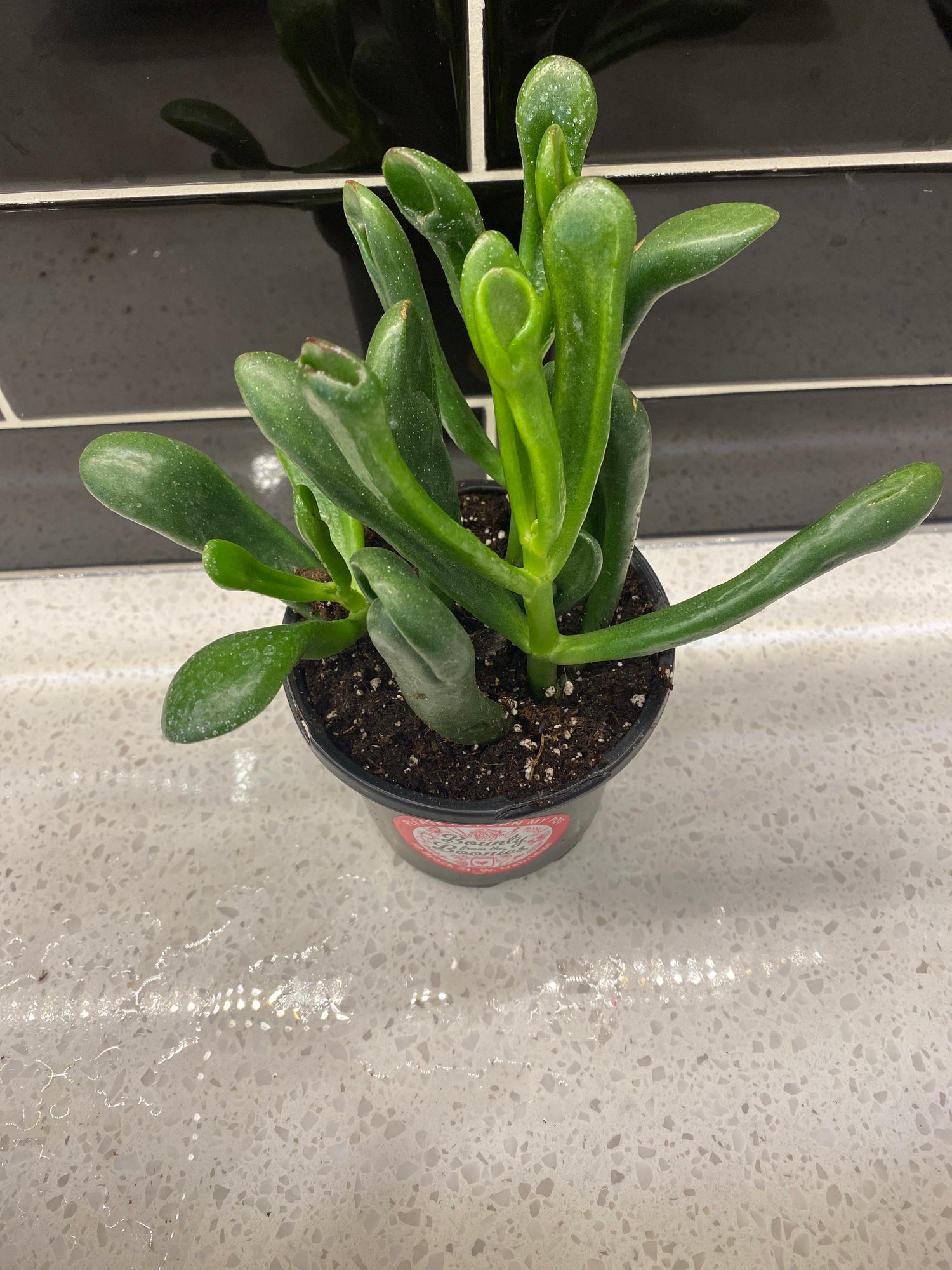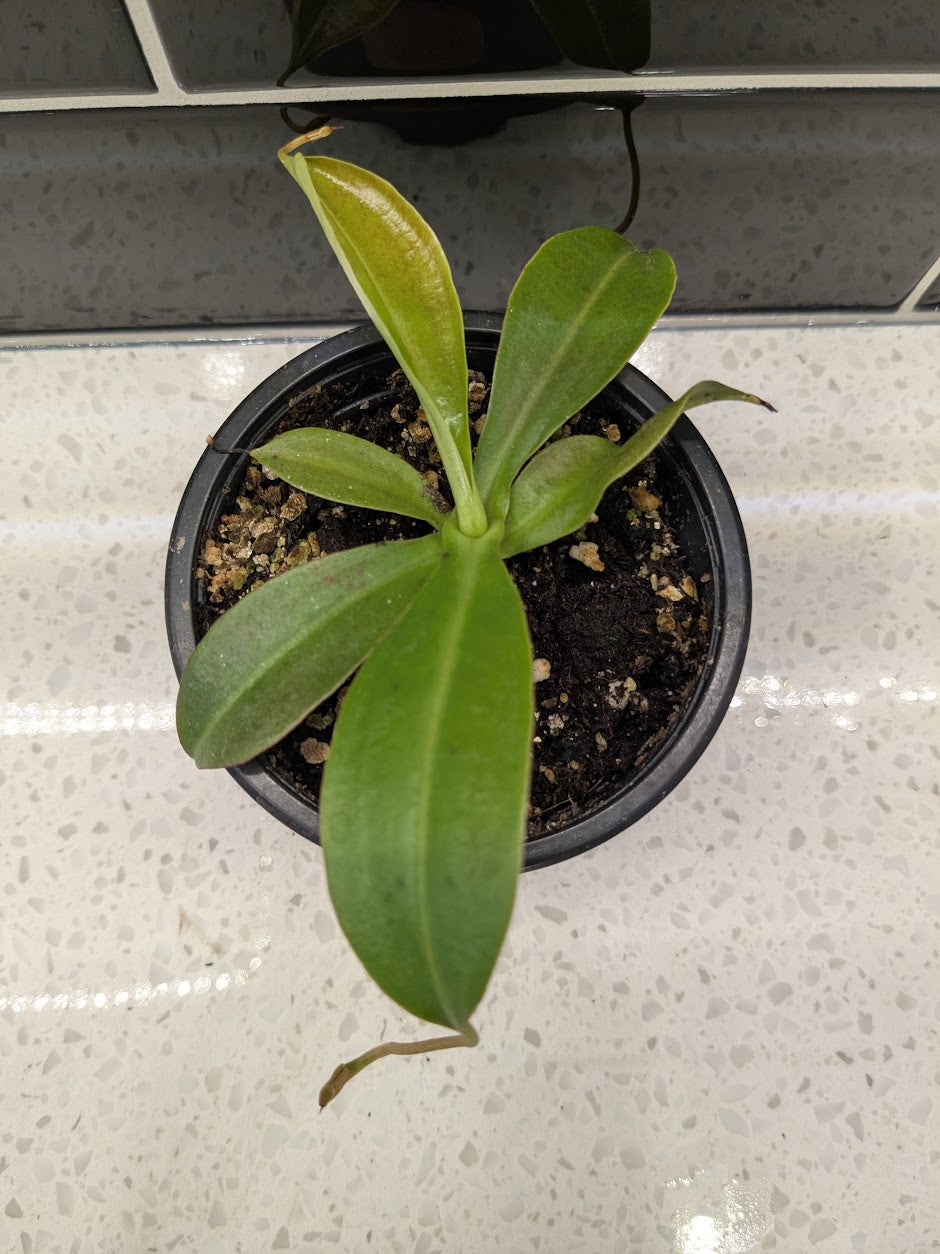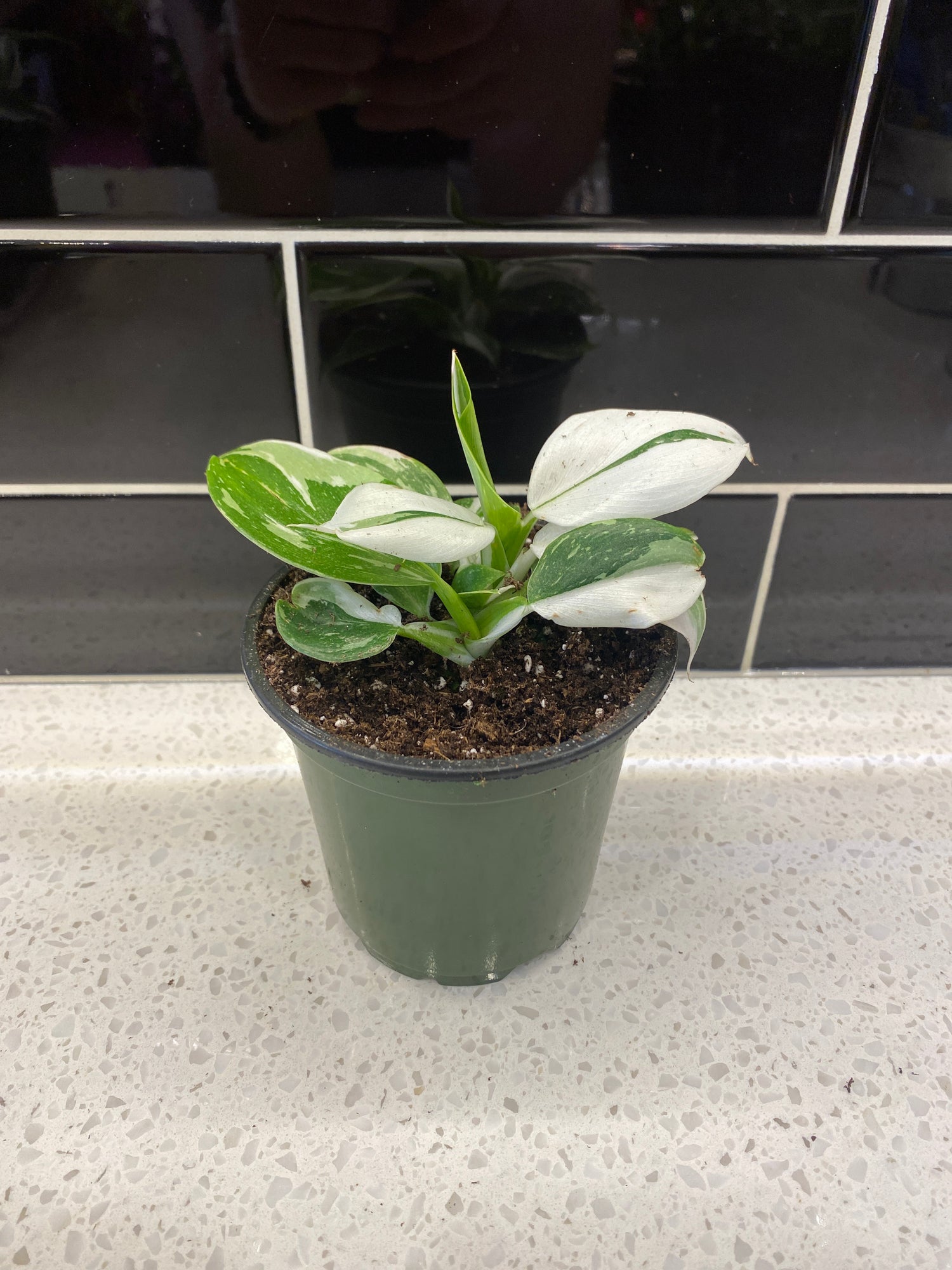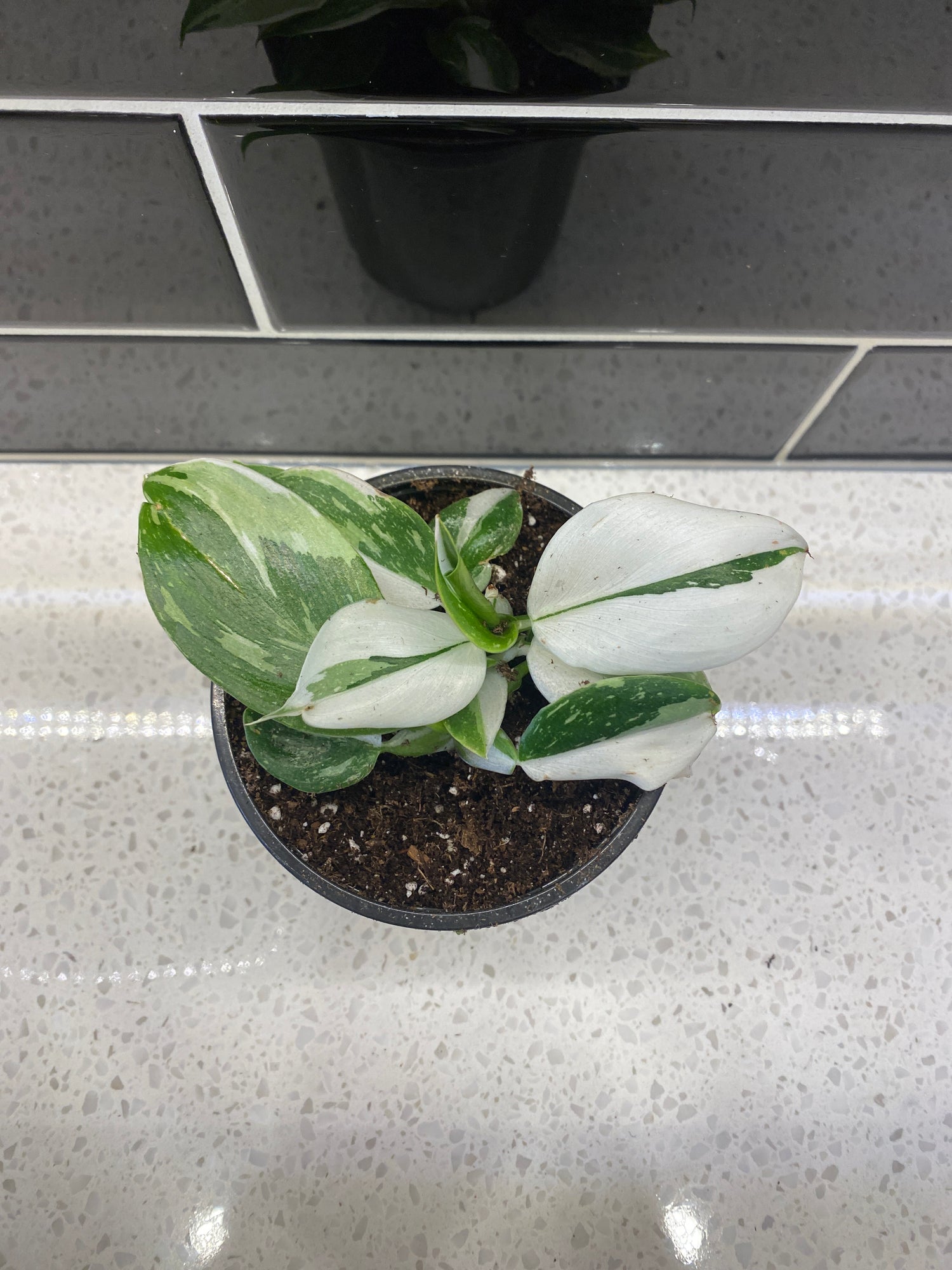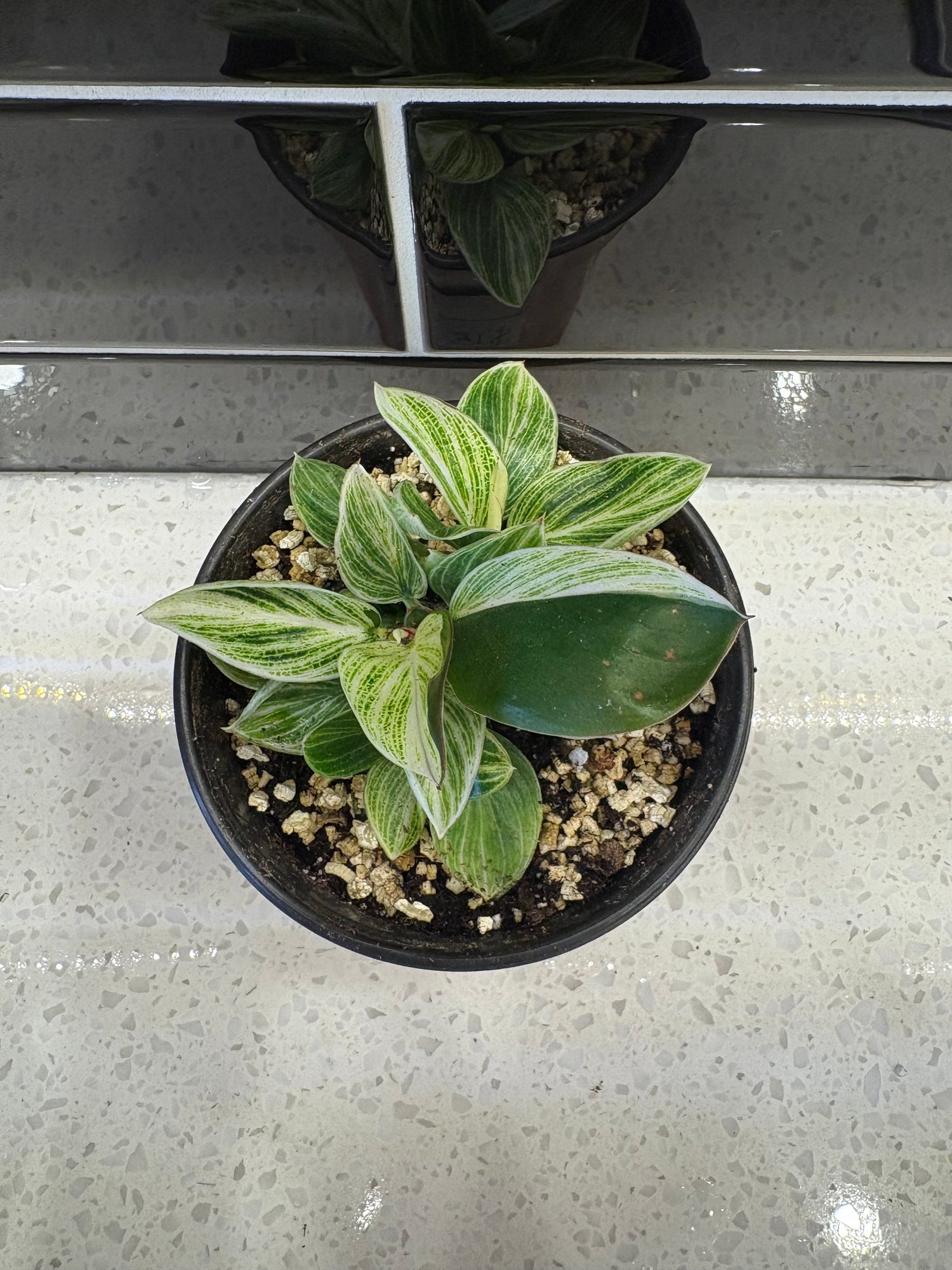Sort by:
41 products
41 products
A weird little succulent that looks like…well…baby toes!
Scientific Name: Fenestraria rhopalophylla
Common Name: Baby Toes
Growth: 2-3 inches tall
Watering: Let dry between watering
Pet Safe: Yes
Care: Intermediate
Light: Bright, indirect light
A fun plant with leaves that look like it’s been splashed with paint. Comes in a variety of colours! The Polka Dot plant originates from the island of Madagascar. It is also found in South Africa and Southeast Asia. The beautiful polka dots on its leaves symbolize creativity and it is believed to bring positive energy and enhance the ambiance of any room.
Scientific Name: Hypoestes Phyllostachya
Common Name: Polka Dot Plant
Light: Bright indirect light
Growth: Can grow up to 12 inches tall
Watering: Keep evenly hydrated, likes to be misted
Pet Safe: Yes
Care: Intermediate
The Venus Fly trap is a unique carnivorous plant. It looks like a creature from an alien movie but don't let this plant scare you, it only munches on insects! With its leaves ending in little claw like hands, this plant closes the instant an insect lands on it.
The Venus Fly Trap originates from coastal bogs of North and South Carolina. They have adapted to low nutrient environments by using the insects they eat to give them the nutrients they need. As long as you keep up with the watering, let them take care of catching the flies!
Scientific Name: Dionaea muscipula
Common Name: Venus Fly Trap
Light Requirements: Bright indirect light, direct sun
Water: They are from Bogs so they like to have wet soil. Make sure the air flow is good. Be sure to take them out of their packaging as soon as you get it home.
Pet Safe: Yes
Care: Intermediate
A member of the nettle family, this plant is known for its moss-like dense foliage. It drapes nicely in a hanging pot! Baby tears originated in the Mediterranean Region. It's a creeping, mat-forming, evergreen perennial that thrives in damp, shaded area. It is known to have calming effects on some plant lovers due to the texture and softness of the foliage.
Scientific Name: Soleirolia Soleirolii
Common Name: Angel Tears/Baby Tears.
Light: Bright indirect light
Growth: it can spread 3-6 feet
Watering: Keep well watered, don’t let dry
Pet Safe: Yes
Care: Intermediate - they like high humidity
MA jade plant variety with stripes of green, white, and pink!
These star-shaped flowers have pink overtones appear in showy clusters at the ends of the branches. This Jade plant is native to South Africa. Also known as "Cassula Ovata", this Jade plant grows on dry, rocky hillsides.
Scientific Name: Cassula Ovata
Common Name: Jade
Growth: 2-4 Feet indoors
Light: Bright indirect light to full sun
Watering: Let dry out between waterings
Pet Safe: No
Care: Easy
Alocasia Jacklyn originates from the tropical rainforests of Indonesia. It is officially known as Alocasia Tandurusa and its local name, "Tandurusa," translates to "deer antlers" in Indonesian, referring to its unique leaf shape. The name Jacklyn comes from the fact that a woman named Jacklyn shared the plant online giving it a surge in popularity.
Scientific Name: Alocasia Sulawesi and Alocasia Tandurusa
Common Name: Alocasia Jacklyn
Light: Bright, Indirect Light
Watering: Water when the top inch of soil are dry. They thrive in high humidity. Keep evening moist but not waterlogged.
Growth: Moderate to fast depending on if it is in ideal conditions
Pet Safe: No
Care: Moderate to difficult
Originating from the rainforests of Brazil, in its native habitat, it thrives in the warm, humid, and shaded conditions found on the rainforest floor, growing under the canopy of taller vegetation. With its stunning spotted leaves with beautiful dark and light green colours, this is sure to be a plant that everyone admires in your home.
Scientific Name: Goeppertia insignis
Common Name: Rattlesnake Calathea
Light: Bright,indirect light
Growth: Can spread 2-3 feet
Watering: When the soil in the pot is dry halfway down
Pet Safe: Yes
Care: Difficult
Delicate but hardy. Bring the forest inside with this adorable Blue Star fern. A popular beginner friendly plant known for its attractive blue green leaves. It originates from tropical and sub-tropical regions of the Americas.
Scientific Name: Phlebodium Aureum
Common Name: Blue Star Fern
Light: Bright indirect light
Growth: 2-3 feet indoors over several years
Watering: They need a very deep watering followed by letting them dry out.
Pet Safe: Yes
Care: Easy
The Haworthia Cooperi grows in clumps of small rosettes of tiny, fleshy, light green leaves. One of the interesting features about this plant is that the leaves have transparent streaks around their tips. Originating from the arid regions of South Africa. It grows in the wild, often in the shade of rocks and other vegetation to protect its delicate, translucent leaves from the intense sun.
Scientific Name: Haworthia Cooperi
Common Name: Haworthia Cooperi
Lighting: 4-5 hours of bright indirect light in the morning sunlight per day
Watering: When the soil is completely dry, give it a good soak
Growth: 2-4 inches
Pet Safe: Yes
Care: Easy
Rare pink variegated leaves make this philodendron variety a prize to be proud of! Originating from Columbia, this plant, in the early 2000's, was a rare and expensive plant often traded in small circles.
Scientific Name: Philodendron erubescens 'pink princess'
Common Name: Philodendron pink princess, blushing philodendron
Light: Direct-bright, indirect light
Growth: 3-4 ft tall, 1-2 ft wide
Watering: Let the top several inches dry between waterings; ensure proper drainage with airy, well-draining soil
Pet Safe: No
Care: Easy
In the Prayer family, its beautifully patterned leaves are sure to impress! Originating in the tropical rainforests of Brazil where it thrives under a canopy of dense forest and moisture. One of the beautiful things about this plant is that it opens up and displays its colours during the day but then closes up at night.
Scientific Name: Calathea roseopicta
Common Name: Calathea roseopicta
Light: Bright indirect light
Growth: 12-24 inches tall
Watering: Keep evenly hydrated, likes to be misted
Pet Safe: Yes
Care: Moderate
The Cobra Fern is best known for its wavy, undulated leaves that resemble a cobra's head. This is a low maintenance, air-purifying houseplant that thrives in low light and high humidity. This plant originates from Southeast Asia and Indonesia.
Scientific Name: Asplenium Nidus
Common Name: Cobra Fern
Light: Indirect/filtered sunlight
Watering: When top inch of soil is dry.
Growth: 12-18 inches tall
Pet Safe: Yes
Care: Easy
This funny succulent has leaves that look like pickles!
This quirky little guys is native to South Africa. In the Spring and Summer this plant can produce cute little daisy-like flowers. But if yours doesn't flower, the appeal and beauty of the pickle plant is all due to its cute, funny-looking leaves. Guaranteed to start a conversation with other plant lovers.
Scientific Name: Delosperma echinatum or Kleinia stapeliiformis
Common Name: Pickle Succulent, Stapelia Stemmed Senecio, Stapelioid Kleinia, Trailing Jade, Spider Plant, Inch Worm, Candle Stick, Candle Plant
Growth: A maximum height of 18 inches (45 cm).
Light: Bright indirect
Watering: Only when soil has completely dried
Pet Safe: Yes
Care: Easy
This succulent is very reminiscent of a certain green fellow wouldn’t you say?
It originated in cultivation, not from a specific natural habitat, though its parent plant, Crassula ovata. The most distinguishing feature is the unique, leaves with a slight inward curve, resembling suction cups or fingers!
Scientific Name: Crassula ovata
Common Name: Gollum, Shrek Ears
Growth: Up to 3 ft (30 cm to 91 cm) tall, and up to 2 ft (30 cm to 60 cm) wide
Light: Bright indirect light to full sun
Watering: Let dry out between waterings
Pet Safe: No
Care: Easy
A carnivorous plant with deep maroon pitchers. Native to Southeast Asia, this plant is so unique in the fact that they use they're pitcher leaves to catch their food. These pitchers lure, trap, and digest insects to supplement their nutrient intake in nutrient-poor soil. Since they are from a tropical climate, they do thrive with lots of moisture and humidity.
Scientific Name: Nepenthes
Common Name: Asian Pitcher Plant
Light: Bright indirect light
Watering: Keep evenly hydrated, likes being misted.
Growth: Slow growing, can take 5-10 years to mature.
Pet Safe: Yes
Care: Intermediate
Rare snowy white variegated leaves make this philodendron variety a prize to be proud of! Originating from Columbia, this plant, in the early 2000's, was a rare and expensive plant often traded in small circles
Scientific Name: Philodendron erubescens 'White Wizard’
Common Name: Philodendron White Wizard
Light: Direct-bright, indirect light
Growth: 3-4 ft tall, 1-2 ft wide
Watering: Let the top several inches dry between waterings; ensure proper drainage with airy, well-draining soil
Pet Safe: No
Care: Easy
The Philodendron 'Birkin' originates the tropical rainforests of Central and South America. The 'Birkin' is known for its signature white pinstripes on dark green leaves.
Scientific Name: Philodendron Birkin
Common Name: White Wave and Birkin White Wave
Light: Bright, Indirect Light
Growth: Can grow 2 to 3 feet tall
Watering: When the top two inches of soil are dry
Pet Safe: No
Care: Easy

